




Christine HINZMANN
Citizen staff chinzmann@pgcitizen.ca
Thirteen years of research, 10 personal war histories complete, no end in sight.
Bob Woytula spent about 1,000 hours on just one of the books he has compiled about his father Mike’s time serving in the Second World War.
Woytula was inspired to tell veterans’ stories because he finds the personal histories fascinating and it’s very important to him that theses stories are recorded, especially for the war vets’ families.
“This is my way of remembering the vets that I bring to life for the families – to the children, to the grandchildren,” Woytula said. “These are their fathers and grandfathers. This is why I do this. I don’t glorify war but I think sometimes we lose the perspective on why we have the freedoms that we do today. It’s because of these men.” Woytula is very aware that time is running out to hear veterans’ stories first hand. Recently, he’s mourned the loss of three veterans he knew personally.
“When these guys pass away, it really bothers me,” Woytula said. “These men are part of our Canadian history where it’s written but we can also talk to the vets and that’s precious. Right now we have a combination (of written and oral history) but the Second World War vets are probably about 91 years plus and in a few years they will all be lost. When they take their last breath, that’s it. We can’t ask any more.”
No one can imagine what these men have been through, added Woytula, who’s read about 250 books about Canadians’ partici-

pation in wars.
“I think experiences are captured in three major ways, sight, sound and smell and when you’ve never been to war, you can’t understand it,” Woytula said.
By telling their stories, perhaps it will provide a greater understanding of the men who returned from war, he added.
Mike was born in 1917 and died in 1961 at 44 years old from heart problems. Woytula was just 13 at the time.
“Because he passed away so young, as I got older I started to wonder about my father’s time in the war,” Woytula said.
But life happened and he didn’t get a chance to delve into the details until much later.
“I really started to dig in 2005,” said Woytula, who is now retired. “It was then that I tried to make sense of where he’d come from and what he was involved in. There were some surprises.”
One of those surprises was finding out Mike was charged with bootlegging in the Crowsnest Pass where he grew up.
“I think people did these things because times were tough,” Woytula said. “So he did what he had to do to survive.”
Woytula said he eventually got his father’s military records and went through all of it to see exactly what Mike did during his time in the war.
Woytula put together a book to tell that part of the story.
When Mike left to go to war, he left behind his wife, Sophie, and Martin, his twoand-a-half-year-old son, Woytula’s oldest sibling, who has since died. It took another whole album to showcase all the postcards Mike sent to Sophie while he was away.
During the process of gathering informa-
tion and trying to make sense of it all, Woytula said his sister, Janet, who is two years older, offered support and encouragement that he appreciated.
Mike started his military career in Calgary on Feb. 4, 1942, and was enlisted as general reinforcements, which Woytula said was typical of enlisted soldiers.
Mike then went back east to the Debert military camp. By August 1942, Mike was in the 4th Canadian (Armoured) Division, stationed in a big Canadian army camp in Aldershot, which was in the south of England, Woytula explained.
Mike, who was the oldest, had two brothers – Emil, born in 1920 and August, born in 1924 – who were both stationed with Mike at Aldershot for a short time. From there, Emil went to Scotland and August went to Italy.
“My dad ended up being a dispatch rider,” Woytula said. “You look at his record and his training and everything and he was riding a motorcycle in and around the front lines. It was a very dangerous job because at times he had to go behind enemy lines to report on gun positions.”
Woytula found a report about Mike that said he received the Commander-in-Chief’s certificate for continuous good service.
The report said Mike was a skilled rider who was frequently exposed to sniper and artillery fire, often navigating horrible roads and enduring the worst weather. It also said he had a keen sense of direction and often navigated unknown territory.
Woytula said when Mike was honoured with the award only eight men were recognized out of 800 in the Fifteenth Canadian Field Regiment.
During his time overseas, Mike kept
moving through Europe with the Canadian troops.
Mike was hospitalized for two weeks in April 1945. The records did not show any details, Woytula said.
Mike was sent back to England to await his trip home.
When Mike got home, he worked in the McGillivray Mine in the Crowsnest Pass but times were tough so he decided to move the family to Prince George in 1955 because jobs were plentiful. Woytula said his dad was a good provider and did the best he could.
Woytula knows his father returned from the war suffering from post-traumatic stress disorder – he remembers his dad diving onto the floor at the sound of a backfiring car – and the entire family suffered from the affects of the trauma his father had survived, he said.
“It can make a family very dysfunctional,” he said.
As the veterans returned to their communities, Woytula said he noticed how many of them coped.
“What I noticed with a lot of the vets when they came back was because of what they’d seen they ended up in the Elks, the Lions, the Rotary – the clubs contributed to the community, because I think they’d seen so much devastation and death, that they tried to reverse that,” Woytula said.
He remembers his dad turning to the Royal Canadian Legion. There Mike could spend time with other veterans who knew what he was going through and Woytula thinks it helped his father.
“They were all in a war and they all understood,” Woytula said. “That was their therapy. That was their healing.”


Laura KANE Citizen news service
BURNABY — British Columbia’s political leaders clashed in a debate on electoral reform on Thursday, with Premier John Horgan casting proportional representation as modern and even “hip,” while Opposition Leader Andrew Wilkinson insisted the system was too confusing.
The politicians often talked over one another during the heated televised discussion on the province’s voting referendum, with Horgan pushing a switch to proportional representation and Wilkinson defending the current first-past-thepost process.
Voters who mark their referendum ballots in favour of proportional representation must rank three possible systems, and Wilkinson accused Horgan of refusing to answer questions and being dishonest with voters about how the systems would work.
“You won’t tell people how many votes they have. You won’t tell people how many MLAs they have,” he said. “People are getting confused by this ballot, which is why the turnout is now 2.5 per cent, because people are not sure what to do with this dog’s breakfast.”
Horgan responded that the three systems are straightforward, and that debate hosts CBC and Global encapsulated them well earlier in the broadcast. He said he trusts B.C. residents will do their research before voting in the referendum.
“I have more confidence in the people of British Columbia, clearly, than you do,” Horgan said.
The premier added that fear of change appeared to be motivating Wilkinson and opponents of proportional representation. The system is used successfully in countries around the world, while first-past-the-post in Canada consistently produces winners out of popular-vote losers, he said.
“Let’s get modern. Let’s get hip,” Horgan said.
Later, Horgan adopted millennial lingo to make his pitch, telling Wilkinson, “If you were woke, you’d know pro-rep was lit.”
Wilkinson pushed back against Horgan’s suggestion that the current system only works for the BC Liberals, which won the 2001 election and the next three elections.
“Let’s talk about how parliamentary systems have worked robustly across Canada and the English-speaking world for hundreds of years,” Wilkinson said.
“At the riding level in the current system, if you like your MLA, you hire them, if you don’t, you fire them. That’s very clear and you know who they are.”
Wilkinson said he was concerned that Horgan’s government had selected three options for proportional representation, two of which have never been used before, out of more than a dozen possibilities. The Opposition leader said a citizens’ assembly should have been formed to create the ballot question.
A majority of 50 per cent plus one is needed to change the system.
Green Leader Andrew Weaver did not participate in the debate.

Citizen staff
The annual Remembrance Day ceremony takes place Sunday at the Prince George Civic Centre beginning at 9:15 a.m.
Following the traditional ceremony the parade to assemble will take place along Canada Games Way to the temporary cenotaph on Seventh Avenue, near the Terry Fox Memorial at 10:45 a.m.
After the outdoor ceremony the parade
Province moves toward universal child
VICTORIA (CP) — Child care in British Columbia will soon cost as little as $200 a month for some parents in the province. Children’s Minister Katrine Conroy says the $10-a-day plan is a prototype and will start at 53 day cares around B.C. She says in a statement the project
will turn back up Seventh Avenue, turn right on Quebec Street, left onto Fifth Avenue, left onto Brunswick, back to Ninth Avenue, and turn left onto Canada Games Plaza. The review platform will be at Seventh Avenue, near Brunswick Street.
Dominion Street will not be blocked to allow full access/egress for the Prince George Fire Rescue Service.
Parking will be available at the former Days Inn, with access on Quebec Street, Sixth Avenue, or Dominion Street.
looks to become a model for the New Democrat government’s 10-year plan for affordable, quality child care. The $60 million project is part of the Early Learning and Child Care Agreement the province has with the federal government and will benefit about 2,500 children.
Fish-kill results in fine
SURREY (CP) — An ice-making company in Surrey has been fined $350,000 after an ammonia solution purged from its equipment ended up in the city’s storm

Parking is also available at Rolling Mix Concrete Arena, city hall and the public library. Pay parking is available at the Coast Hotel and Courtyard by Marriott, accessible parking for those with a registered tag is at the parking lot beside the Four Seasons Pool, closest to the Civic Centre. As always refreshments are available at the Royal Canadian Legion, 1116 Sixth Ave., after the ceremony. See today’s Citizen for a special Remembrance Day section.
sewer system that flows into a creek where fish were killed.
Environment and Climate Change Canada says it received a report in April 2014 about dead fish in a creek near the Golden Ears Bridge and two enforcement officers with the department conducted an investigation. It says water samples taken near the Arctic Glacier Canada Inc. facility and the sewer system were found to be harmful to fish.
The company has pleaded guilty in court to violating the Fisheries Act.
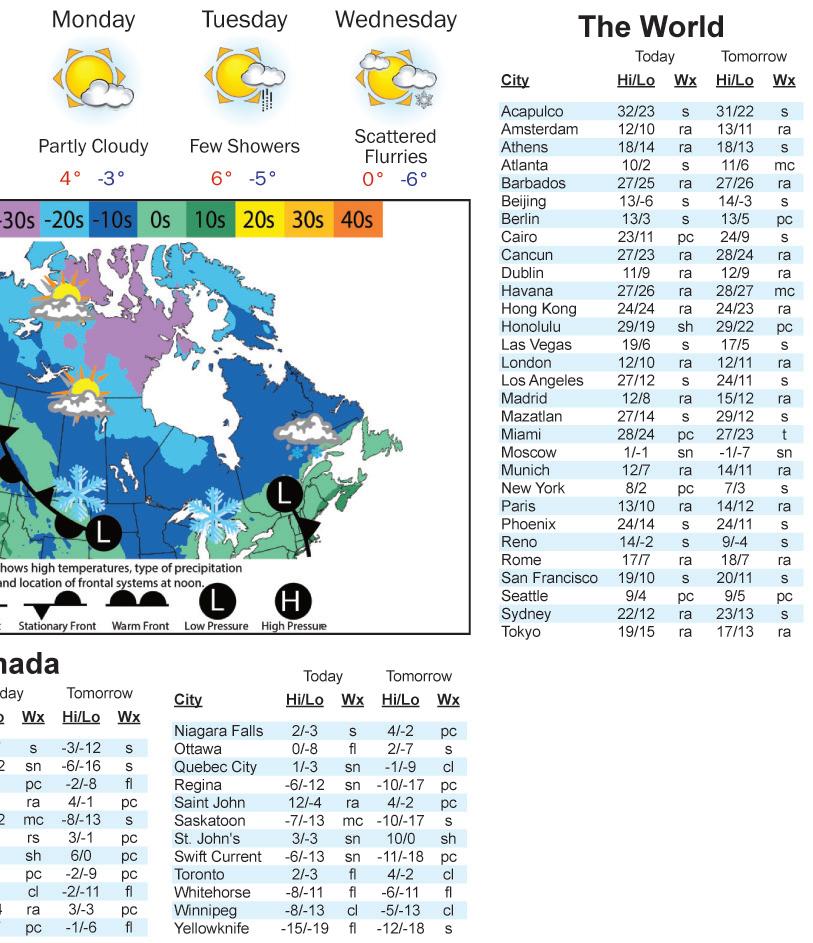


(CP) — Doctors at over 300 walk-in clinics in B.C. want fair payment for their work compared with those in full family practice, says the head of an association that’s rallying its members to increase access and profits through innovative technology.
Mike McLoughlin, founding director of the Walk-In Clinics of BC Association, said the facilities fill a gap for patients who can’t get a family physician or sameday appointments and should be considered an important part of reforming primary care.
The association gathered for its annual general meeting Friday, where members were expected to discuss issues such as negotiations between the government and Doctors of BC, the association that represents the province’s physicians, whose agreement will expire in March.
McLoughlin said walk-in doctors often see patients with complex conditions but can’t charge the extra fees that are paid to full family physicians.
McLoughlin said access to care is eroded by a quota for walk-in doctors who are paid to see up to 50 patients a day, followed by half the fee payment – or about $30 for a basic visit –until they reach 65 patients and then they get no fee at all.
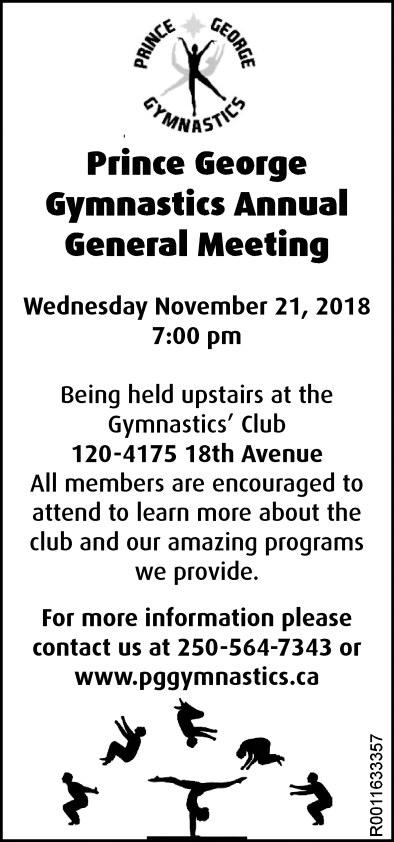
Frank PEEBLES Citizen staff fpeebles@pgcitizen.ca
One of this region’s veteran conservation officers has won the province’s top prize in his profession.
Len Butler has been named conservation officer of the year by the Ministry of Environment. He is stationed in Williams Lake where he is an inspector for the entire Cariboo-Thompson region.
“Len Butler is a model conservation officer,” said Doug Forsdick, formerly stationed in Prince George and now B.C.’s chief conservation officer.
“In every facet of his career and personal life, he sets an example for other officers,” Forsdick added. “Len has a strong work ethic, a terrific knowledge of the job, terrific use of discretion and truly cares about people. Len has touched many officers, trained, mentored and set them on a path for success. He has truly left a mark on the B.C. Conservation Officer Service.”
According to Environment Minister George Heyman, Butler had covered a lot of ground in his career, even more than most COs.
“When Len Butler started his career as a fish and wildlife officer in Alberta 38 years ago, he was given an unmarked truck with a portable emergency light, a pair of boots, a uniform and ticket book, then told to do compliance checks on people hunting and fishing,” the minister said.
“Butler was aware he would mainly be working on his own, patrolling large areas off the beaten path and dealing with people who would rather be left alone. He knew what he was getting himself into when he signed up for the job but he could not help but feel nervous.”
Butler himself picks the story up at this point.
“You have to be confident and you have to know your skills quite well,” Butler said. “That really hasn’t changed as long as I’ve been doing this job. I always wanted to get that type of post-

ing. Some of those places that are isolated and you’re working on your own really test you. Your first line of defence is good speaking abilities to get yourself out of a lot of tight situations.”
After Alberta stations at Strathmore and Fort Chipewyan, he cast his gaze towards the other side of the Rockies. In 1991, he crossed that border and joined the B.C. Conservation Officer Service.
He now oversees the operations of the CO service in three zones in the centre of the province.
Butler has worked with the special investigations unit and is one of the three leads for the predator attack team, which responds to human-wildlife encounters and attacks.
“Preventing human-wildlife conflicts is something Butler is passionate about after dealing with numerous incidents throughout
Mark NIELSEN Citizen staff
A combatant in a drug-related gunfight outside a Prince George drug house was sentenced Friday to a further 2 1/2 years in prison for possessing a loaded sawed-off shotgun.
While B.C. Supreme Court Justice Marguerite Church described Cody Aubrey Lorntsen, 32, as the victim of an ambush, she called his actions “far from benign.”
During the early morning hours of Oct. 22, 2017, Lorntsen found himself exchanging gunfire in the driveway of a 2000-block Tamarack Street home with Michael Campbell-Alexander, who was wielding a .22 calibre rifle.
Video retrieved from a security camera at the home shows Campbell-Alexander leaving the house from the front door and then stationing himself at one end of the driveway. When Lorntsen came out from a side door, Campbell-Alexander opened fire.


his career,” said the minister. “On one occasion, a sow grizzly and three cubs decided to make the town of Nelson their home, leading Butler on a nearly month-long chase as the animals feasted on garbage and unpicked fruit. Eventually Butler figured out a pattern and the four bears were captured and released back into the wild.”
If you ask Butler about the accomplishments he is proudest of, at the top of his list is putting together the agency’s defensive tactics program in 2007 for training new recruits and existing conservation officers.
According to the ministry, Butler is the 26th recipient of the award. Since 1992, the designation has been awarded annually to a conservation officer for going above and beyond the call of duty and exemplifying the values of the Conservation Officer Service.
Lorntsen, who claimed to have happened upon the shotgun while inside the home, returned fire and they continued to shoot at each other while taking cover behind vehicles parked in the driveway, the muzzles from their weapons flashing in the video. Lorntsen was hit in the thigh and while the bullet missed his femur, he suffered nerve damage and continues to need a cane to move around. As well, his dog, which he had on a leash, was shot dead. Campbell-Alexander, meanwhile, was hit in an ankle with bird shot.
Despite the wound, Lorntsen got away and, after wrapping his leg with some clothing he had with him, made his way to Quesnel. Police tracked him to an apartment building where he was arrested and the shotgun was found, loaded this time with slugs, while 17 other rounds were found in a bag Lorntsen had been using to carry the weapon.
At the time, Lorntsen had just begun serving one year probation for two counts of possessing a controlled substance and possessing a weapon for a dangerous purpose, specifically bear mace, and was supposed to report to an addiction treatment centre in the Lower Mainland.
But on Sept. 24, 2017, he told the probation office he was unable to get a ride and wanted to get the condition changed. But when police conducted a curfew check on where he was supposed to be living, Lorntsen was nowhere to be found and “on the lam” until his arrest.
On Thursday, Lorntsen testified he was homeless at the time but on his way out of the city with the aim of going to the treatment centre when he came across three women who asked where they could find some methamphetamine.
Lorntsen said he took the women to the home, and in the hope of scoring some himself despite a lack of money, also went inside. But upon getting to the top of some stairs, he came across a man he knew, but did not name, with a chrome revolver in one hand and knives tucked into the waist band of his pants. Lorntsen testified he began to fear for his life when the man called him a “rat goof.”
Campbell-Alexander, who Lorntsen said he did not know at the time, was standing next to the man but then left the scene. At that time, Lorntsen said he noticed the shotgun tucked between the arm and a cushion of a nearby couch, grabbed hold of it and backed down the stairs.
“I acted fast and I grabbed the gun and held it to my side and said ‘nobody’s touching me, I wanna just leave,’” he told the court. “And I left out of the house and wasn’t paying attention and that’s when I got shot and panicked.”
Video showed Lornsten, his dog, and the women entering the home shortly before 6 a.m. and then Lornsten and his dog leaving a bit more than than two minutes later when the firefight began.
Something of a side issue arose over whether Lorntsen was telling the truth or actually had the gun when he entered the home. Evidence from video cameras showed Lorntsen buying a pistol grip from Wholesale Sports the day before but he claimed he was buying it for someone else who gave him $100 and promised to give him a hit of methamphetamine upon bringing back the item.
Church found problems with Lorntsen’s story but not enough to leave her beyond reasonable doubt, noting the bag he carried into the home was black while the one in which police found the gun was red and agreeing with him that loaded firearms are commonplace in drug houses.
Had she found the other way, he was facing as much as a further six months in prison.
As it stood, Crown prosecutor Tyler Bauman argued for 5 1/2 years and defence counsel Talia Magder, who contended Lorntsen would be dead if not for the shotgun, suggested 2 1/2 years followed by three years probation was appropriate. Church settled on four years and Lorntsen, who has remained in custody since he was arrested, received 1 1/2 years credit for time served prior to sentencing, reducing the time remaining to 2 1/2 years.
In July, Lorntsen pleaded guilty to possessing a loaded restricted firearm, possessing a firearm contrary to an order and breaching an undertaking. Nine other counts, including aggravated assault and unlawfully discharging a firearm, were stayed. Campbell-Alexander remains in custody on seven charges, including attempted murder, killing an animal and discharging a firearm with intent to wound, and his case is currently in the pre-trial stage.
OTTAWA — Prime Minister Justin Trudeau has set off on a 10-day voyage across Europe and Asia to pursue his oft-stated goal of finding markets for Canadian goods and services beyond the United States.
Trudeau travels first to France, then on to summits with other world leaders in Singapore and Papua New Guinea, looking to push trade across the Pacific.
Observers say Trudeau’s biggest test will be in the last two stops.
Canada has shown repeated interest in trading with Asian nations on the Pacific Rim over the years, but has failed to make sustained progress in a region where trade deals often depend on personal relationships.
International Trade Minister Jim Carr will join Trudeau there, where he will have facetime with leaders from a 10-nation bloc known as the Association of Southeast Asian Nations (ASEAN) and then with a larger group of world leaders at the annual APEC leaders’ summit.
“For a domestic audience, the prime minister and other ministers will have to demonstrate that this trip advances the trade diversification agenda in a significant way,” said Sen. Yuen Pau Woo, an independent appointed by Trudeau and an expert on the Asia-Pacific region.
“What our counterparts will want to hear is that Canada is not retreating into a fortress North America with the signing of NAFTA 2.0, that the trade diversification agenda is sincere and has teeth and resources and determination behind it.”
Foreign-policy experts who keep track of Canada’s trade interests in Asia caution that Trudeau is likely to return home with a series of project agreements rather than any major new trade treaties.
Combined, the ASEAN countries would be Canada’s sixth-largest trading partner and exploratory free-trade talks with them are going slowly – though some are included in a larger

trade treaty with Pacific Rim countries that Canada just ratified, meaning it will soon come into force.
Canada already has a trade deal with Europe, most of which kicked in last year, eliminating tariffs on numerous goods. But a small part of the deal still needs to be ratified by each member of the European Union.
Former Quebec premier Jean Charest, who now specializes in international business as a partner with law firm McCarthy Tetrault, said if enough countries approve the remaining portions, the deal becomes irreversible. A large European player such as France, Germany or Italy would likely seal the deal.
The unsteady political situation in Italy and German Chancellor Angela Merkel’s recent move toward retirement leave France as Canada’s only option to nail down the agreement quickly before European elections in the spring, Charest said.
“If you get a new parliament that is voted
Mia RABSON Citizen news service
OTTAWA — Climate-change advocates and renewable-fuel producers want Ottawa to make sure new natural-gas power plants have to pay a price for every ounce of their greenhouse-gas emissions by 2030.
Canada is finalizing the regulations for its carbonpricing system for big industrial emitters. The rules will apply to any facility that produces at least 50,000 tonnes of emissions a year, including electricity generated by fossil fuels such as coal, natural gas and diesel. Ottawa is weighing the need to reduce Canada’s emissions against a desire not to hurt consumers by forcing electricity companies to raise rates too quickly.
The Canadian Council on Renewable Electricity – whose members include producers of wind, solar, hydro and tidal power – and some environment groups want Ottawa to make the system strong enough to discourage new fossil-fuel electricity plants.
“The idea is to send a signal that even for existing generation, the closer you get to 2030 the more emissions should be exposed to the carbon price,” said Jean-Francois Nolet, vice-president of the Canadian Wind Energy Association.
As the rules stand now, electricity producers will only pay the federal carbon levy on a small portion of their emissions.
Canada’s carbon pricing system has two components: the direct carbon levy that individuals and smaller organizations will pay on fuel they use to drive, heat their homes and power their electronics; and a separate levy for big industrial emitters.
Only provinces that don’t have their own carbon levies will be subjected to the federal systems. Right now those are Saskatchewan, Manitoba, Ontario and New Brunswick. The big-emitters system for industry will also be applied in Prince Edward Island, Yukon and Nunavut, which asked to use it.
The industrial system will see Ottawa determine the average emissions produced by each type of fuel, and the cap is set at 80 per cent of that average. Power companies will pay the carbon levy – $20 per tonne of greenhouse gas produced in 2019, and increasing regularly – only on the emissions over that cap.
Ottawa’s current proposal is that the cap be set at 800 tonnes per gigawatt-hour of electricity produced by coal, 550 tonnes for diesel and 370 tonnes for natural gas.
Nolet says the renewables industry is lobbying for Ottawa to ratchet down those caps by at least five per cent a year for existing facilities. For new facilities, he said the hope is the levy will be charged on 100 per cent of emissions by 2030.
Canada has 16 coal power plants left and intends to phase most of them out by 2030. There are more than 90 natural-gas plants, with 44 of them in the provinces affected by Ottawa’s carbon price.
Catherine Abreu, executive director of the Climate Action Network Canada, said there is a fear that natural gas will be the most common choice to replace coal, and while gas is less dirty than coal it still has significant emissions. A big Canadian natural-gas plant emits more than 1.5 million tonnes of greenhouse gases each year.
Trudeau travels first to France, then on to summits with other world leaders in Singapore and Papua New Guinea, looking to push trade across the Pacific.
and campaigned against this, then you’re in a new political zone,” Charest said. “Trudeau should be pressing (French President Emmanuel) Macron – who controls his majority in the national assembly – to move ahead with this as rapidly as possible.”
France’s ambassador to Canada, Kareen Rispal, said it is better to let Europeans see the benefits of the deal, known by the acronym CETA, slowly instead of rushing into a debate about its merits before the EU elections.
European elections often turn into a protest vote and are “a call for all the populists,” Rispal said.
“It’s a very tricky campaign,” she said. “If we have CETA in the campaign, we think it’s not a good idea.”
Before all the trade talk, Trudeau is to mark the 100th anniversary of the end of the First World War, first at Vimy Ridge today where he will meet with veterans and tour the monument built to memorialize the “War to End All Wars.”
On Sunday, Trudeau is to stand alongside more than 60 world leaders, including U.S. President Donald Trump, Russian President Vladimir Putin, Merkel and Macron, for Armistice Day commemorations.
Some 60,000 Canadians died and 172,000 were injured during the First World War, between 1914 and 1918.
About 10,500 of those deaths happened at Vimy Ridge as Canadian troops captured the strategically important spot from the Germans.
OTTAWA (CP) — The Trudeau government is again delaying implementation of firearm-marking regulations intended to help police trace guns used in crimes – despite a 2015 campaign pledge to immediately enact them.
The federal government announced Friday it will defer the regulations, which were slated to come into force early next month, until Dec. 1, 2020. It said more time is needed to come up with a system for implementing the regulations.
The regulations would require domestically manufactured firearms to bear the name of the manufacturer, serial number, and “Canada” or “CA,” while imported guns would have to carry the “Canada” or “CA” designation.



When the armistice to end the First World War was signed a century ago, the moment of the signing – on the 11th hour of the 11th day of the 11th month – was frozen in time, even as time marched on, with no army or signature on Earth able to stop it.
So many lives lost in a conflict that brought industrialization to the battlefield with horrific results. We remember the 16 million deaths, the sacrifices, the bravery, the dates, the places, as we must.
Sadly, we also forget that about three times as many people died in the Spanish flu epidemic that infected the entire world in 1918 and 1919. Their deaths were as tragic and senseless as those who died in the trenches.
The flu and the war changed how people saw the world. For the first time, both war and sickness were seen in a global context, rather than problems confined to regions or continents, where oceans could offer safety from contagious viruses.
Yet the aftermath of the First World War didn’t just make the planet smaller, it liter-
ally transformed humanity’s view of space and time.
Albert Einstein had already provided the scientific underpinnings for that change years earlier, when he published his Theory of Special Relativity in 1905, with work by him and others over the next 10 years towards an understanding of general relativity.
Isaac Newton had portrayed time in absolute terms, untouchable and unchanging, but Einstein provided the formulas to show Newton was wrong, confirming what the Industrial Revolution, culminating in the Great War, had already shown – time is relative.
Trains and telegraphs shrunk the world over the course of the 19th century, demanding inventions like time zones and standard times that (mostly) everyone could agree on.
As James Gleick shows in his book Time Travel: A History, Germany imposed Sommerzeit (Summer Time) during the First World War in an effort to save coal. Daylight Savings Time spread around the world after the war. Time was seen for the first time as another device that could be shaped and controlled for human purposes.
“When the Nazis occupied France,” Gleick writes, “they ordered all the clocks moved an hour forward, to Berlin time.”
Agreeing to a global concept of time was no simple task. France was hardly thrilled to bend a knee to Greenwich Time. In the wake of the First World War, one of the challenges for the League of Nations was to impose the Gregorian Calendar as the worldwide standard, forcing those countries still using the Julian Calendar to fall in line.
“Bulgarians and Russians complained that their citizens could not be made suddenly to age by thirteen days,” Gleick writes, “to surrender thirteen days of their lives in the name of globalization.”
The Great War showed that not just space but even time could be taken away from people.
The philosophical implications of relative time, the war and the flu shattered previously held beliefs in the absolute, from faith in the divine to the certainty of truth, justice and morality.
Yet great thinkers had already arrived at this place centuries earlier.
More than 300 years earlier, long before E=mc2, In Flanders Field, poison gas and a

We stand together, waiting, on the platform, knowing that the train will soon depart, and I think, “Will I ever see you again?” while I try to hide from him my breaking heart. King and country calls, so he must leave –there are sergeants’ stripes upon the sleeve of the uniform my husband wears with pride. Underneath my lowered lids tears begin to glide. Soon the waiting troops are urged to board and there’s no time left to speak Goodbye is the anguished final word, devoid of any reassurance which I seek. The huffing, puffing train has picked up speed,

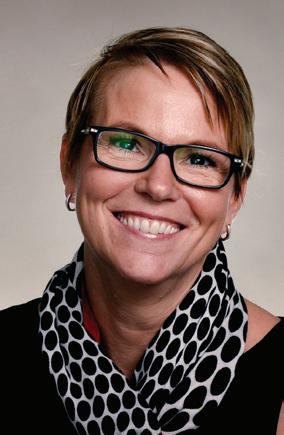
disappearing soon from sight blindly, on stumbling feet, I head for home, while daylight fades into the coming night and I ask myself, “Will I ever see him again?”
Painful weeks will pass before I learn to which army camp my husband has been based, then very soon was transferred yet again! Expanding war leads army to make haste! Each transfer brought him closer to the war in a country hostile and unimaginably far, and every army wife who shares the pain asks herself, “Will I ever see him again?”
Ida Nikkel,
Prince George

Mailing address: 201-1777 Third Ave. Prince George, B.C. V2L 3G7
Office hours: 9:00 a.m. to 5:00 p.m., Monday to Friday
General switchboard: 250-562-2441 info@pgcitizen.ca General news: news@pgcitizen.ca
Sports inquiries: 250-960-2764 sports@pgcitizen.ca
Classifieds advertising: 250-562-6666 cls@pgcitizen.ca
fateful meeting aboard a train car to silence the guns, William Shakespeare had already deconstructed time, ripping it to shreds in the wake of war, death and tragedy. Upon the news of his wife’s death, Macbeth fully comprehends the fragility of life and the weight of time. She should have died hereafter; There would have been a time for such a word.
Tomorrow, and tomorrow, and tomorrow, Creeps in this petty pace from day to day, To the last syllable of recorded time; And all our yesterdays have lighted fools The way to dusty death. Out, out, brief candle!
Life’s but a walking shadow, a poor player That struts and frets his hour upon the stage And then is heard no more. It is a tale Told by an idiot, full of sound and fury
Signifying nothing. We remember, we forget. Time, death and war always our companions.
The clown recognizes the absurdity. In his book, Gleick quotes the perpetually glum comedian Steven Wright: “Right now, I’m having amnesia and deja vu at the same time. I think I’ve forgotten this before.” — Editor-in-chief Neil Godbout
Editor’s note: the following essay was written by the late father of Karin Yarmish of Prince George. Ian Bruce Macaskie served as a captain in the British Army during the Second World War. He was captured by the Germans early in the conflict and spent five years as a prisoner of war.
For many months I have wanted to put down words expressing my great respect and affection for the common potato. It is with regret that I look back on the unreasonable years of my life and remember how inconsiderate I have been towards solanum tuberosum, taking it for granted in a callous fashion. Remorse compels me to make this confession with the hope that others may take heed.
I feel a genuine sorrow when I recall the smooth white shapes that lay in cool water waiting to be cooked and set before me as golden fingers or fluffy complement to my meat. I am filled with grief now, that I was so lacking in appreciation as to have refused a second, a third, nay a fourth helping. How was it that I better favoured asparagus or artichokes and treated the potato as a mere stopgap vegetable?
Consider then, what a noble act of charity and forgiveness was shown to this ignorant youth when he fell upon hard times. Instead of keeping aloof and holding the grievance of a neglected past against me, the potato stretched out the hand of friendship. Weary and hungry, I received my meager ration for the day and from that moment became a humble man.
Looking on the gnarled and scabby figure that lay in my palm, I realized with bitterness that it was man’s disinterest, ungentlemanly treatment and injustice that was responsible for such ill health in millions of his kind. Brutally unearthed and shovelled into dark corners, potatoes were obliged to endure in silence conditions of monstrous overcrowding, dampness and necrosis.
When eventually brought to
light to feed such as I, instead of seeking an understandable revenge, they kindly presented all the good that remained within them. Conscious of a fresh understanding I tenderly administered to that which had become the light of my life, washed the grime from the shrunken body and with the skill and patience of a surgeon I cut away all that was rotten. I dressed the wounds with salt and refused to turn from the odour of disease. Thus I did my best to make amends for the scorn of the past, full of wonder that no grudge was borne against me, and grateful for the nourishment afforded by my new-found comrade. He paved the way for a love for his species and during subsequent years behind bars we went through difficult times together. I have cared for him in dank places and he has always responded to the best of his ability. We have met under a variety of conditions in summer, winter, autumn and spring and I must hold in high esteem his consistent and touching devotion. There are few hours that find us apart. We face each other daily and take stock of one another, the result being of benefit to both parties.
When I can afford a little margarine I help him to attain the dignity that is his birthright, and so that he may not become bored with his shape I sometimes mash him. And I do not think that our shining example in communication only works while beneath a common roof. Even the stranger far out in the field has welcomed me.
Once while fleeing from my oppressors and much in need of refreshment, I dug beneath the yeilding soil, awoke a tuber from his slumber and he fed me without question.
Such affection is truly noble and familiarity between us breeds no contempt.
But I cannot concentrate on further praise. The jailer shuffles to the door.
Is it the dinner hour already? I come my friend. I will not keep you waiting.
LETTERS WELCOME: The Prince George Citizen welcomes letters to the editor from our readers. Submissions should be sent by email to: letters@pgcitizen.ca. No attachments, please. They can also be faxed to 250-960-2766, or mailed to 201-1777 Third Ave., Prince George, B.C. V2L 3G7. Maximum length is 750 words and writers are limited to one submission every week. We will edit letters only to ensure clarity, good taste, for legal reasons, and occasionally for length. Although we will not include your address and telephone number in the paper, we need both for verification purposes. Unsigned or handwritten letters will not be published.
Display advertising, digital advertising and website inquiries: 250-562-2441 ads@pgcitizen.ca Reader sales and services: 250-562-3301 rss@pgcitizen.ca Letters to the editor: letters@pgcitizen.ca
Website: www.pgcitizen.ca
Website feedback: digital@glaciermedia.ca
Member of the National Newsmedia Council A division of Glacier Media


Marie TILLMAN
Special to The Citizen
Ioften think about what legacy means, and I’ve learned something important about it in the 14 years since my first husband, Pat Tillman, was killed in Afghanistan. The way all of us live our lives is important to how we are remembered; but when you’re an icon, which Pat became, your legacy has to be guarded.
An icon’s life and image enter the public domain, and people often try to co-opt it to suit their own needs.
Since last year I’ve watched from the background as professional athletes have taken a knee to draw attention to injustice and racial inequality in the United States.
Pat was in the military, so many people want to attach a brand of blind allegiance to him and use him to argue that kneeling during the national anthem is unpatriotic.
Pat was also against the Iraq War, so many others want to use him to argue against American involvement in overseas wars.
His essence is bent to fit an agenda.
Pat’s life has become symbolic, but he was a flesh-and-blood man, and there was nothing about him that fit into a neat category.
He was an athlete who didn’t really pay much attention to sports. He was outspoken and opinionated, but a convincing argument could change his views.
His nuanced thinking was what

Cpl. Pat Tillman is seen in a this 2003 file photo. He was serving in the 75th Ranger Regiment when he was killed in Afghanistan on April 22, 2004, by friendly fire. Tillman turned down an NFL contract with the Arizona Cardinals to join the military after the Sept. 11, 2001 terrorist attacks.
I loved most about Pat – that he could love his country so much that he would sacrifice his life to protect it, but also so much that he could challenge it.
I’ve been asked to comment countless times on what Pat would
Jamie HAMMOND Special to The Citizen
The people of Afghanistan have long used underground aqueducts known as a karez or qanat to move water long distances and provide nourishment for their crops and families.
During the operations in Afghanistan, there were always rumours, and some evidence, of karezes being used to store weapons and ammunition or to move insurgents. There were however, practical limitations to using them for anything but water transportation due to their depth and the steepness of their walls as we discovered after June 7, 2008.
Capt. Jonathan Snyder, a 26-year-old member of Princess Patricia’s Canadian Light Infantry from Penticton and a University of Victoria grad, was on his second tour of Afghanistan. He was later recognized for his bravery on that second tour with a Star of Military Valour, Canada’s second-highest award for bravery, for his leadership of a team assigned to an Afghan company that was ambushed by Taliban insurgents. A few nights after that incident, humble and dedicated, he was back patrolling across a contested area of grape fields dotted with karez shafts. Snyder stepped near the edge of a karez in the darkness and the ground gave way. He fell 20 metres down into the darkness and into water. His patrol members worked desperately to recover him. A helicopter eventually carried him to Kandahar Airfield, where he was pronounced dead.
As his death was not “a direct result of hostile action,” however, Snyder was ineligible for the Sacrifice Medal that was announced later that summer. He was, nevertheless, patrolling at night in territory where an enemy was active. As he was unable to give away his movements, using white light was not an option and his death, though accidental, was a direct result of his operational service in Afghanistan.
A review of the policy took place and with Snyder’s case top of mind, the eligibility criteria for the medal were amended the next year to read “as a direct result of a hostile action or action intended for a hostile force” and “as a result of an injury or disease related to military service.” With time, Canadians have accepted that all deaths and injuries related to an operation where a hostile force is operating deserve recognition. We have Snyder to thank for that, a Canadian hero in every sense of the word.
Col. (Retired) Jamie Hammond, OMM, CD, served around the world for 28 years in Canada’s infantry.
have thought about the National Football League protests, but I’ve always declined.
Over the years, I’ve become used to people wanting to know what he would have thought about something in the news, or assign
a way of thinking to him based on what they know about who he was at 27. They want to freeze him in time.
I find it ironic because Pat was always known as a free thinker who was constantly growing.
He was very different when we got together at 16 from who he was at 27, and he would have been different, too, at 42.
We should be able to respect his willingness to sacrifice for what he believed in without looking at it through the lens of today’s divisive political climate.
So while I still refuse to speak for Pat, I will speak as a widow, a wife, a mother, an American, and, yes, a patriot. I think that patriotism is complex, like Pat himself.
It is not blind or unquestioning. And it’s a fool’s errand to argue over who’s allowed to claim sacrifice.
Many of the kneeling athletes say they are protesting as American patriots who want the nation to be better than it is.
When I look around at the vitriol aimed at them for expressing their beliefs, and at the compulsion to simplify complicated issues in order to pit people on opposing sides, I want to kneel, too.
Because I believe we are at our best as Americans when we engage in constructive dialogue around our differences with the goal of understanding one another.
This mind-set is where change happens, progress is made and bridges are built.
I believe that in our hearts we are all the same: we all want our children to be healthy and safe and to have opportunities. We may have significant differences in how we think we should get there, but divisive rhetoric will only deepen the chasm and make us forget all that we share.
Pat lived his life with passion and respected this quality in others, once writing that, “to err on the side of passion is human and right and the only way I’ll live.”
Pat was also deeply curious, constantly reading to learn more, and always striving to understand why someone felt or acted the way he or she did.
After reading Jon Krakauer’s Under the Banner of Heaven, for instance, about Mormon fundamentalists, he called a Mormon cousin to engage in a discussion with him.
He was always looking to understand views or perspectives different from his own.
I can’t say how Pat would have felt about race in the United States today or kneeling during the national anthem.
But I can say that he would have engaged in thoughtful and respectful discourse, never shying away from the nuance, never taking the easy way, and looking, always, for a conversation instead of a fight.
Marie Tillman is the founder and chief executive of Mac & Mia, and co-founder and board chair of the Pat Tillman Foundation. She is the author of The Letter: My Journey Through Love, Loss, and Life.


Jonathan J. COOPER, Michael BALSAMO Citizen news service
THOUSAND OAKS, Calif. — The gunman who killed 12 people at a country music bar in Southern California went on social media during the attack and posted about his mental state and whether people would believe he was sane, a law enforcement official said Friday.
Also, one of the possibilities investigators are looking into is whether gunman Ian David Long believed his former girlfriend would be at the bar, the official said.
Authorities have not determined a motive for Wednesday night’s rampage at the Borderline Bar and Grill.
The official was briefed on the investigation but not authorized to discuss it publicly and spoke to The Associated Press on condition of anonymity. The official would not give additional details on what the 28-year-old former Marine posted on his Facebook and Instagram accounts.
Long, a former machine-gunner who served in Afghanistan, opened fire with a handgun during college night at the bar, then apparently killed himself as scores of police officers closed in.
As investigators worked to figure out what set him off, President Donald Trump blamed mental illness, describing the gunman as “a very sick puppy” who had “a lot of problems.” Investigators have not commented on whether mental illness played a role in the rampage. But a mental health specialist who assessed Long after sheriff’s deputies responded to a call about his agitated behaviour last spring worried he might be suffering from post-traumatic stress disorder.
The incident happened in April,
City reeling from shooting besieged by fire

when yelling and loud banging noises coming from the home
Long shared with his mother prompted a next-door neighbour to call authorities. The mental health specialist concluded there were no grounds to have him involuntarily committed.
Several people who knew Long a decade ago as a high-schooler in the suburb of Thousand Oaks said in interviews that he made them uncomfortable, sometimes through aggressive behaviour.
At the White House, Trump touted his efforts to fund work on PTSD among veterans. He declined to engage on questions on
whether the nation needs stricter gun control laws.
The dead in the shooting rampage included sheriff’s Sgt. Ron Helus, a 29-year veteran gunned down as he entered the bar, and Telemachus Orfanos, 27, who survived last year’s massacre in Las Vegas, where a gunman in a highrise hotel opened fire and killed 58 people at an outdoor country music festival.
Authorities in Thousand Oaks described an attack of military efficiency. None of those injured was hurt by gunfire, authorities said. Instead, when Long shot, he killed.
“Every Marine is trained in
THOUSAND OAKS, Calif. (AP) — A city reeling from the tragedy of a mass shooting was under a siege of a different sort Friday as raging wildfires on both sides of the city forced widespread evacuations and shut down part of the main freeway to town. Flames driven by powerful winds torched at
urban warfare and indoor gun fighting,” said Marc Bender, an instructor for emergency responders in Riverside County, Calif. “Every Marine is a marksman.”
Julie Hanson, who lives next door to the Longs’ ranch-style home, described him as “odd” and “disrespectful” well before he left home a decade ago, got married and enlisted in the Marines. She could often hear him yelling and cursing, but several months ago, unusually loud banging and shouting prompted her husband to call authorities.
“I was concerned because I knew he had been in the military,” Tom
least 150 homes in Southern California, burning parts of Calabasas and mansions in Malibu and prompting orders for 250,000 people – including some celebrities – to flee as the fire marched across the Santa Monica Mountains toward the sea. The cause of the blazes was not known. For Thousand Oaks, which had been consid-



Hanson said.
About 18 months ago, Don and Effie MacLeod heard “an awful argument” and what he believes was a gunshot from the Longs’ property. Don MacLeod said he did not call police but avoided speaking with Ian Long.
“I told my wife, ‘Just be polite to him. If he talks, just acknowledge him, don’t go into conversation with him,”’ Don MacLeod said.
Long made others feel uncomfortable going back to his teens. Dominique Colell, who coached girls’ track and field at the high school where Long was a sprinter, remembers an angry young man who could be verbally and physically combative.
In one instance, Colell said Long used his fingers to mimic shooting her in the back of the head as she talked to another athlete. In another, he grabbed her rear and midsection after she refused to return a cellphone he said was his.
“I literally feared for myself around him,” Colell said in an interview. “He was the only athlete that I was scared of.”
ered one of the safest cities in the nation before a gunman massacred 12 people at a country music bar, the spasm of violence jolted the city’s sense of security. Encroaching flames presented an entirely different hazard. “It’s devastating. It’s like ‘welcome to hell,”’ resident Cynthia Ball, said about the dual disasters.


Ted CLARKE Citizen staff tclarke@pgcitizen.ca
On drum night at the old Coliseum, now known as Rolling Mix Concrete Arena, Prince George Spruce Kings centre Dustin Manz needed just one stick to deliver an impressive solo. He pounded the Langley Rivermen into submission, collecting three goals and an assist in an 8-1 blowout.
Manz’s linemate Patrick Cozzi also had a big night with two goals and three assists and rookie Nicholas Poisson had the first two-goal game of his BCHL career. Tyler Schleppe also scored for the Kings (15-6-0-1), who won their third straight to improve to 9-3 on home ice this season.
“We’ve been working on our scoring around the net lately and we know we needed to score a lot more, we’ve had a lot of close games lately and I think it all came together today,” said Manz.
“Me and Cozzi and (Ben) Brar have been working well lately. We’re finding each other all over the ice and it’s working well for us. We really needed that one to jump up in the standings and try to catch Chilliwack, so it’s nice.”
Jake Livingstone was the only Langley shooter to beat Logan Neaton, who made 22 saves for his 12th victory. The Rivermen (9-11-1-0) remained fourth in the Mainland Division, 12 points behind the second-place Spruce Kings.
Manz gave a season-high home crowd of 1,137 its first reason to celebrate, one minute into the second period when the Kings cashed in their second power play of the game. The 19-year-old from Vanderbilt, Mich., tipped in Brar’s shot from the point after Manz won the draw in the Langley end.
Cozzi collected his fifth of the season at even strength two minutes later, scoring on a blistering snap shot that sailed high over the glove of goalie Braedon Fleming.
The Rivermen got on the board on their first power play, nine minutes into the second when Livingstone snuck a point shot through the block attempt of defenceman

Max Coyle, catching a sliver of net just inside the post behind Neaton.
The Kings had an answer for that, two minutes later – a milestone moment for Schleppe. He was set up in front for his first career BCHL goal thanks to some slick moves by linemate Michael Conlin. Conlin carried the puck in deep and after putting it through the legs to get by a Langley defender he threaded a gift-pass in front for Schleppe who filed it away.
It was also a night to remember for Schleppe, who had his parents from Vancouver, Ben and Janet, and 14-year-old sister Jadyn in the crowd to witness his first goal, which came two days before his 17th birthday.
“Conlin was really hard on the forecheck, he outworked about four guys and made a great pass under a guy’s stick right on my tape, so I should’ve buried it,” said Schleppe. “It was a really big game and we got the two points
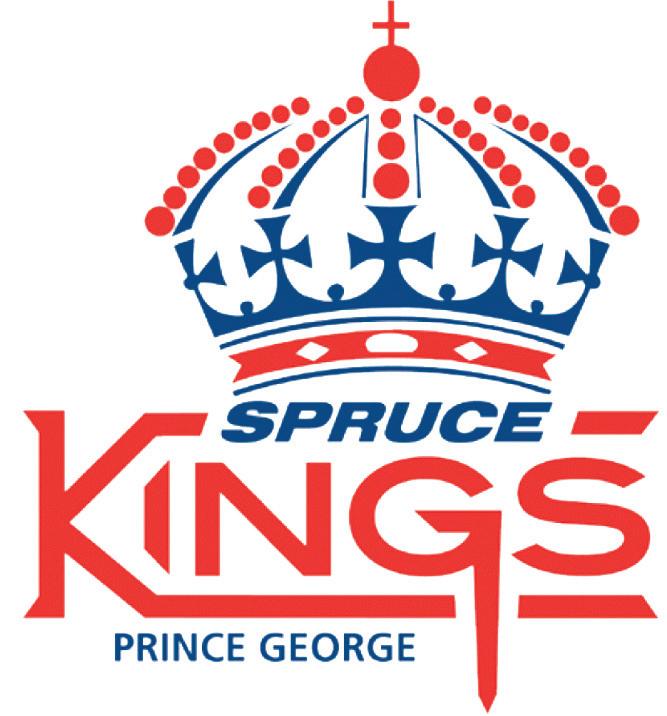
and hopefully (today) we’ll get another two points.” Manz made it a 4-1 count before the second period ended, prompting Langley coach Bobby Henderson to bring Alex Rolfe in to replace Fleming. In the third period, Manz completed his second BCHL hat trick with his 10th goal this season with a wraparound shot that ticked in off Rolfe’s skate. Poisson kept up the onslaught, sandwiching his
two goals around Cozzi’s second goal of the game.
“I’m at a loss for an answer and I’m sure the players feel the same way,” said Henderson. “I guess we’ll marinate in it tonight and the sun will come up tomorrow. It’s disappointing for sure and if nothing else I feel bad for the fans. I feel they got robbed of their ticket value tonight.”
In a scoreless, fast-paced opening period the Rivermen weathered a cyclone of Spruce King activity and came out of it unscathed. For much of the opening 10 minutes the Kings owned the puck, keeping the visitors pinned in their own zone chasing the play. They kept Fleming on his toes but could only muster a couple of dangerous scoring chances. The Rivermen found their sea legs in the second half of the period and erased a 6-1 shot deficit to lead the rubber-biscuit barrage 8-7 at the buzzer. Their eighth of the game was a severe test of Nea-
Ted CLARKE Citizen staff
In only his second season in the Western Hockey League, Vladislav Mikhalchuk is marching along on a fast track to becoming a dominant player.
If not for a sudden twist of fate this past summer, he might well be marching to a military drum.
But he’s back in Prince George, keeping the Cougars in the hunt for a playoff spot.
Heading into tonight’s game in Langley against the Western Conference-leading Vancouver Giants, Mikhalchuk is the Cats’ leading point-getter, with three goals and 10 assists though 17 games.
That might not have been possible for the 19-year-old from Minsk, Belarus, had he not received help from an outside source who helped him clear a paperwork hurdle which threatened to block his return to Prince George.
Facing 18 months of mandatory military duty, Mikhalchuk reached out to Evgeni Konobri, a former Kontinental Hockey League goalie, who helped him through the process.
“When you turn 18 in Europe you have to join the army and they said ‘Let’s join,’ and I said ‘I can’t, I’m a hockey player,’ and they said ‘We don’t care,’ and that’s why I
left Belarus, but I didn’t have a visa,” Mikhalchuk explained.
“I had a Canadian visa, but it was with my old passport and I got a new passport and went to Moscow to switch my visa to my new passport. But I didn’t have any friends in Moscow where I could live for two weeks and it’s too expensive for two weeks. So (Konobri) texted me on Instagram and I texted him to explain my problem and he said to come to live with him for two weeks. I was so scared, but I came to him and he was a hockey player too.”
Given the chance to pick up where he left off with the Cougars after scoring 14 goals and 33 points in 60 games in his rookie season, Mikhalchuk has thrived. His quick release and hard shot is a nightmare for goalies to try to stop. His knack for threading pinpoint passes to teammates and his ability to leave defenders fishing for the puck while he blows past them is earning points with NHL scouts compiling their prospect lists. Mikhalchuk has played well in the first two months of the season and he’s certainly in the mix to hear his name called at the NHL draft next June in Vancouver.
“He’s starting to open eyes – he’s skilled, he can skate, he can shoot. He’s a 200-foot player and I really

like him,” said Cougars head coach Richard Matvichuk. “Since he’s been here he’s been great. When Vlad turns on the work ethic he’s a very good hockey player and now that he’s getting used to the North American side of it, not just the hockey but hanging out with friends here and making different relationships, it’s making him a better player.”
Mikhalchuk has been playing the right side on a line with left
He’s starting to open eyes – he’s skilled, he can skate, he can shoot. He’s a 200-foot player and I really like him.
— Richard Matvichuk
winger Jackson Leppard and Brendan Boyle and Matvichuk likes the chemistry they’re showing on the ice. Mikhalchuk’s increased understanding of the language they speak on the ice has helped immeasurably.
“His English is getting way better – he’s working on it on a daily basis and it’s translating into a better game for him,” said Matvichuk. “He’s willing to learn. He wants to watch video, he wants to get better and it’s great to see the difference now that he’s growing into Vlad Mikhalchuk. He’s becoming a hockey player.”
Playing on one of the youngest, fastest teams in the WHL, Mikhalchuk’s icetime has increased exponentially this season and he’s seeing the results. In the first Seattle game last weekend, a 4-1 win
ton’s reflexes, but he got his glove in the way of Daneel Lategan’s close-range one-timer.
Langley’s two previous meetings this season with the Kings were close, both ending in one-goal wins for Prince George.
“We’re kind of in a slump right now and we’re fighting the puck quite a bit, and we’re on our own page,” said Rivermen defenceman Alec Capstick. “There’s not a lot to say after that one. They’re a good team, they’re fast, they’re hard and they play well, credit to them. It’s a quick turnaround tomorrow and we’ll all get a good rest and come back flying.”
LOOSE PUCKS: The rematch starts tonight at 7… The Kings remained five points back of the first-overall Chilliwack Chiefs. Prince George has three games in hand over the Chiefs… Kings winger Corey Cunningham remains sidelined with a concussion after he got hit by a shot in last week’s 3-2 win over Penticton.
at CN Centre on Friday, he had a goal and an assist paired with Josh Maser and Matej Toman and that line was in on all four goals.
“The coaches believe in me, like, I’m playing power play, and they give me a lot of time on the ice,” said Mikhalchuk, who had two breakaways last Saturday in the Cougars’ 2-0 win over Seattle.
“I’ve had to improve my defence play. I know where I have to be.” Mikhalchuk patterns himself after Alex Ovechkin, whom he once saw play live in the KHL for Moscow Dynamo.
“When he played in the KHL he wasn’t very good because it was a big (rink) area and he felt different,” Mikhalchuk said. “He’s better in NHL rinks.”
Mikhalchuk made the decision two years ago to leave Belarus and through an agent submitted his name for the 2017 CHL import draft and the Cougars picked him in the first round, 54th overall. Prior to that he played for the under-18 national team in Belarus and was a member of the U-17 team that won the Mac’s Midget Tournament in 2016. He figured the major junior route gave him the best chance of making it to the NHL and so far the WHL has lived up to his expectations.
see BELARUS, page 10

Ted CLARKE Citizen staff tclarke@pgcitizen.ca
The Prince George Polars will be taking on the Titans today at 4 p.m. in a B.C. Secondary Schools Football Association double-A varsity playoff game at Masich Place Stadium.
But it won’t be the Samuel Roberts Technical Titans of Maple Ridge. They declined the invitation.
Instead, the Polars will clash with the South Kamloops Titans, who made it official Wednesday they will be the opponents for the Northern Conference champions.
“SRT forfeited, they said they only had 13 players and two of them are juniors,” said Polars head coach Pat Bonnett. “It’s not something we probably would have done, we’re probably more gutsy than some of the southern teams. But they said they had a couple injuries in their last game and a couple players couldn’t make the trip, so they were down to 13 players.”
Some last-minute scrambling on both sides led to South Kamloops agreeing to make the trip after being eliminated from playoff contention as the third-place finishers in the Interior Conference. SRT was the fourth-place team in the Eastern Conference.
“It’s given them new life, they were out of the playoffs,” said Bonnett. “They were cleaning out their lockers and their coach came in and gave them the option, so they’ve been brought back from the dead and are all

excited about playing.
“Our take on it is if we can’t beat this team then we probably don’t deserve to go further anyway. We’re not taking them lightly because we know they are the underdog and are going to play like underdogs, which means they’ll be playing with plenty of enthusiasm. They’ll be playing their best so our guys have to be up for it.”
South Kamloops finished with a 2-2 record, third in the Inte-
rior, ending the regular season last Friday with a 35-18 win over Westsyde of Kamloops. The Titans played an exhibition game at Masich Place Stadium on Sept. 15, defeating the Nechako Valley Vikings 27-0. South Kamloops also beat the Kelly Road Roadrunners 17-0 in preseason play in Kamloops, Sept. 22.
The Polars will be without starting centre Josh Gabrielle (knee injury) and fullback Gage Ridland (broken collarbone). Bonnett says
they’ll have 20 players available, five of whom played for the PGSS junior team. There are three playoff games on tap today at Masich. Kelly Road, the second-place finishers in the Northern Conference, will take on the G.W. Graham Grizzlies of Chilliwack (third in the Eastern Conference) today at 11 a.m. That will be followed at 1:30 p.m. by the College Heights Cougars-South Kamloops junior varsity game.
Ted CLARKE Citizen staff
Of the four fastest female skiers
Thursday at the Biathlon Canada selection trials in Canmore, three wore the colours of the Caledonia Nordic Ski Club.
Prince George was prominent in the third and final race to determine Canada’s teams for international competitions later this year. After six kilometres of racing in the individual start race, Caledonia racer Emily Dickson, a native of Burns Lake, crossed the finish six seconds behind race winner Nadia Moser of Whitehorse, Yukon. Dickson was second, followed by third-place Sarah Beaudry and Megan Tandy, who both consider Prince George
their hometown. Dickson, 21, shot clean in both shooting rounds which helped make up time on Moser, who had a 22-second penalty tacked onto her time for missing one target in her standing round. Moser clocked 19:57.5, while Dickson came in at 20:03.5, 1.3 seconds ahead of Beaudry and 8.7 seconds in front of Tandy. Beaudry cleaned both rounds, while Tandy had one miss in her prone round.
The 30-year-old Tandy, who is now based in Germany, won Wednesday’s sprint race and was second in Tuesday’s sprint.
In the men’s race Friday, on a 7.5 km route, senior team member Christian Gow set the
winning pace (18:58.3), edging his brother Scott by 8.9 seconds to win his second of three trials events. Both Canmore natives got through the race without a miss on the range.
Nathan Smith of Calgary was third, 33.7 second off the winning pace. He missed two of the five prone targets. Matt Neumann of Prince George was 14th (20:42.16), 1:44.3 behind. Racers were each allowed three spare rounds in their clip. The women’s race drew 27 biathletes while 41 entered the men’s race.
On Monday, Biathlon Canada will name its three teams for the international circuits – IBU World Cup, IBU Cup and IBU Junior Cup.
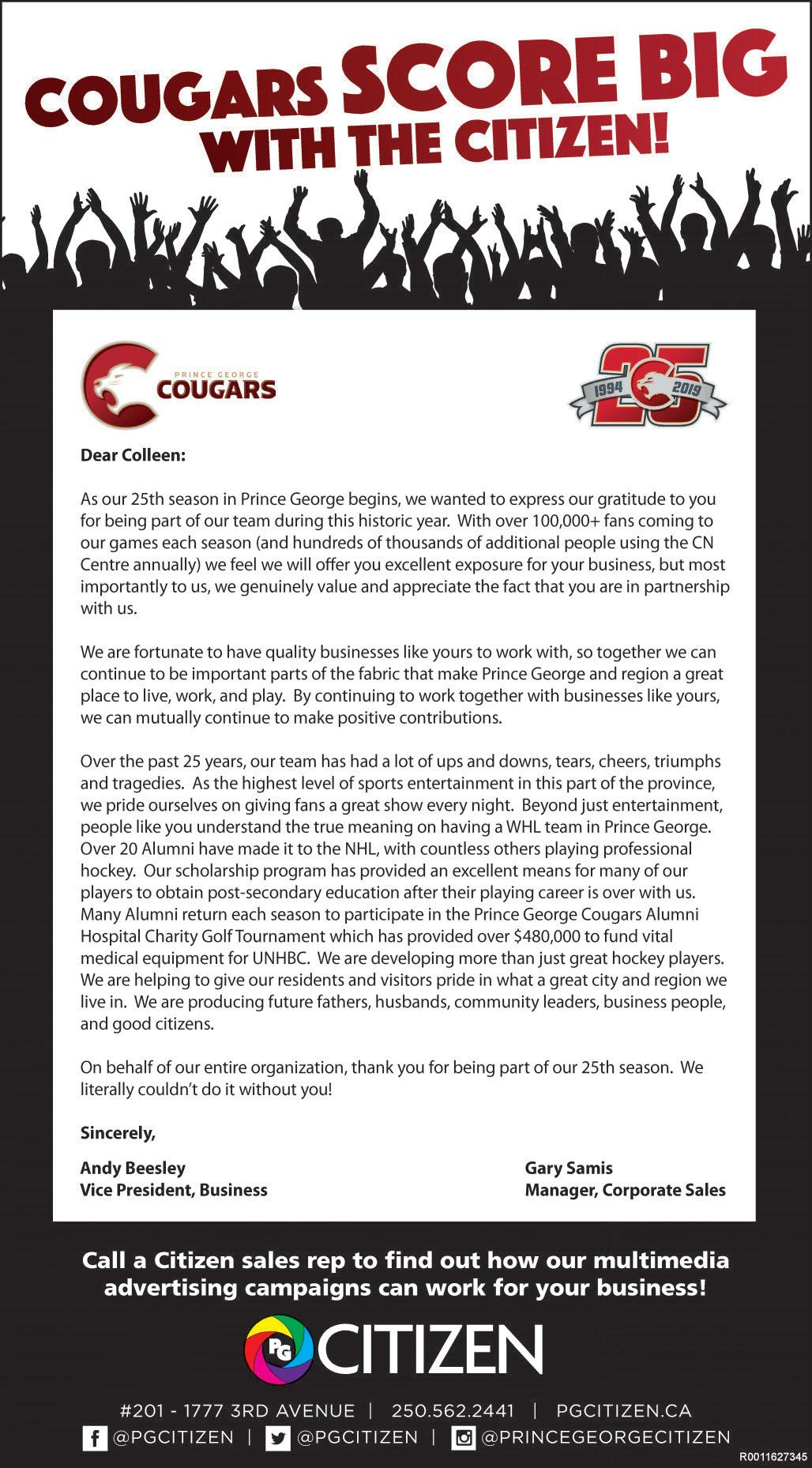

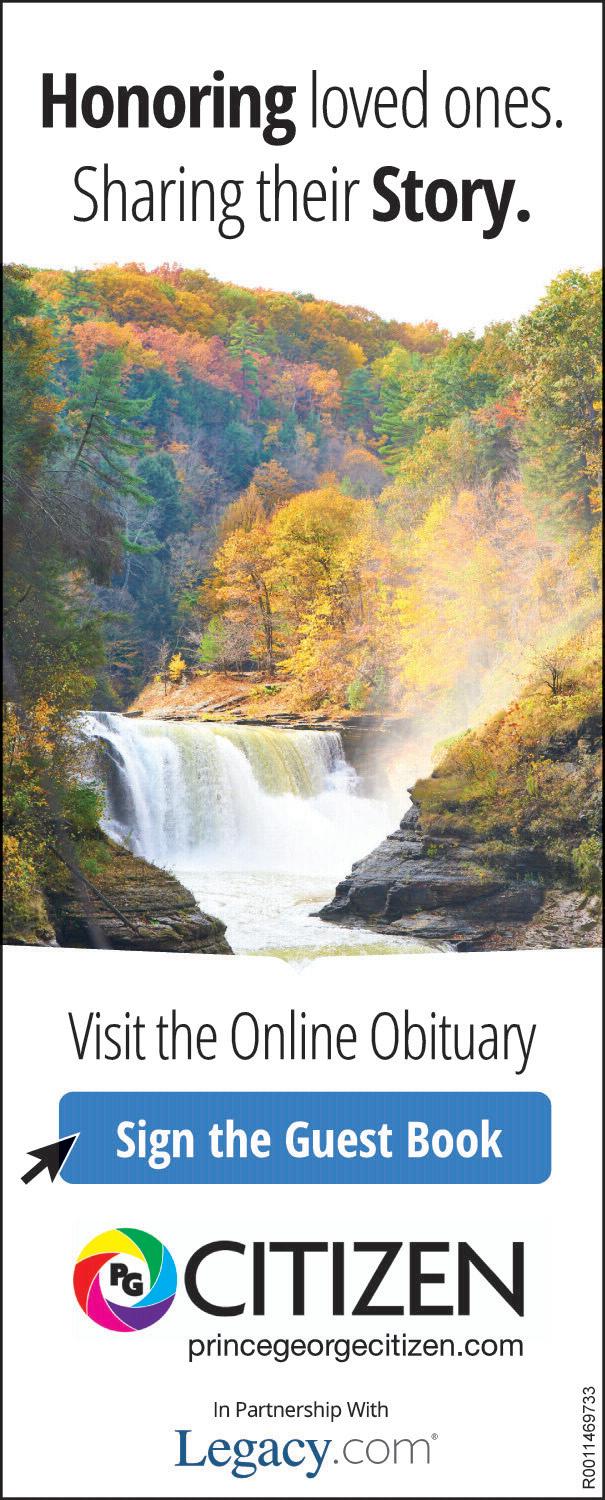
from page 9
“Here in Canada, hockey is much faster than in Europe and the rink is smaller and the players are more aggressive,” Mikhalchuk said. “All my life I wanted to play in Canada, it’s like a dream. “I got a shock when I got drafted. My English wasn’t really good but I played last year and my English improved a lot. Second year, I know everybody (on the team) and it’s way easier.”
Mikhalchuk’s was billeted last season with UNBC men’s basketball coach Sergey Shchepotkin and his wife Alla, who are both Russian-born, and they lived together with Cougars teammate Pavel Azghirei, also a Russianspeaking native of Belarus. This year, Mikhalchuk requested billet parents who don’t speak Russian, just so he can practice his English. He now lives with Sharon and Elmer Stafford.
His parents are home in Minsk, a city of about two million, and he has one brother, 10-year-old Leon, who also plays hockey. They don’t get to see him play in person due to the cost of travel, unlike most family members of the Cougars based in Western Canada, but they faithfully watch the internet game webcasts.
Mikhalchuk turned down the offer to play at the IIHF world junior tournament. Belarus was relegated from the top division and is now part of Group A, which will play Dec. 9-15 in Fussen, Germany. He was with the world junior team in Buffalo last year but didn’t get to play and said he doesn’t want miss time with the Cougars.
“It’s starting right now and they asked me to join but I don’t want to,” he said. “Last season I didn’t play a lot, I spent the time on the bench and I missed 12 games here.”
He’s looking forward to visiting the Edmonton Oil Kings on Jan. 27 and he’s hoping for a chance to play against his best friend, 18-year-old right winger Andrei Pavlenko, who also hails from Minsk.
The Cougars (7-7-1-2) will have their hands full this weekend against the Giants (12-3-2-0), who have just two regulation losses in their last 10 games.
“They’re a four-line balanced team and I know they have some injuries but they’ve got some scoring power, no doubt,” said Matvichuk. “We feel the two games against Seattle were a springboard for us and I thought we played well in both games. We have enough talent up front to score with our hard work so it’s a matter of keeping the puck out of our net. The huge thing was we eliminated turnovers in the high-risk areas and that was the difference.” Defenceman Cameron MacPhee is still out with an upper-body injury but the Cougars are otherwise healthy. Centres Illijah Colina and Ethan Browne and right winger Mike Maclean are back from injuries and should be in the lineup tonight (7 p.m. puck drop). The rematch is set for Sunday (2 p.m.).
THUNDER BAY, Ont. (CP) — Brad Gushue of St. John’s, Nfld., remained perfect at the Tour Challenge with a 6-3 victory over Scotland’s Ross Paterson on Friday. Gushue (4-0) posted a perfect record when he won the Grand Slam of Curling event last year in Regina. The 11-time GSOC title winner will hold the hammer to start today’s quarterfinals and through the rest of the playoffs should his team advance. Paterson was eliminated with the loss, holding a 1-3 record. Gushue will face the winner of the morning tiebreaker between Regina’s Matt Dunstone and Glenn Howard of Penetanguishene, Ont. Dunstone (2-2) scored a 5-4 win over Switzerland’s Peter de Cruz (3-1) earlier Friday to force the extra game. Calgary’s Kevin Koe qualified with a 2-2 record. Koe earned the seventh seed with a 3-1 win over Brad Jacobs of Sault Ste. Marie, Ont. Jacobs will face American John Shuster in the quarterfinals. Edmonton’s Brendan Bottcher battles Rich Ruohonen of the United States, and Koe clashes with De Cruz in the other men’s quarterfinal matches.
On the women’s side, Rachel
and
Switzerland’s
WINNIPEG — Blake Wheeler
took a pass on soaking up praise after his career-high five-point performance on Friday.
The Winnipeg Jets captain scored an empty-net goal and added four assists in a 5-2 victory over the Colorado Avalanche, who have lost five straight.
Mark Scheifele, Patrik Laine, Kyle Connor and Nikolaj Ehlers also scored. Scheifele had a pair of assists.
“When you’re passing it to guys like that, it gives you a level of confidence that kind of changes how you move the puck,” Wheeler said. “If you were passing to somebody that doesn’t have a prayer of putting it in the net, it’s a little bit different than giving it to (Mark) Scheifele or (Patrik) Laine.
“No doubt those guys give me a ton of confidence to find those little seams. And like I said, they need such little space. If I can just squeeze it in there, there’s a good chance it’s going in.”
Wheeler, who had three primary assists, extended his point streak to nine games (two goals, 15 assists). His 18 assists this season are one behind Colorado’s Mikko Rantanen.
Laine and Connor each scored on the power play, giving the Jets (9-5-1) at least one power-play goal in 11 straight games to add to a franchise-record roll.
Defenceman Erik Johnson scored his first goal of the season and Tyson Jost notched his second for the Avalanche (7-6-3), who are (0-4-1) during their losing skid.

“I think leaders on this team gotta get on this now,” Johnson said.
“We gotta stop the bleeding and string some wins together here.”
Connor Hellebuyck made 28 saves for the Jets. They continue a four-game homestand Sunday against New Jersey.
Jets defenceman Josh Morrissey
said he and Wheeler sometimes drive to games together. He had an inkling the captain might sizzle after the team’s break following their trip to Finland.
“I just had a feeling,” said Morrissey, who picked up one assist. “He’s been really on it the last few days in practice.”
Semyon Varlamov stopped 19 shots for Colorado, which heads to Edmonton for a Sunday game against the Oilers.
“It’s always hard to start the games when you’re down like one or two goals,” Varlamov said. “But it doesn’t matter even if you’re down, like it’s only one or two
goals. You know, I mean we have enough skill on this team to score like five.”
The Jets shut down Colorado’s potent top line of Nathan MacKinnon, Gabriel Landeskog and Rantanen.
“Obviously there are some elite players on that line and they’re hot right now and they’re feeling it,” Morrissey said. “I thought we did a good job of not giving them a ton of odd-man rushes.
Winnipeg led 2-0 after the first period and held that margin following the second.
Connor scored eight seconds after Avs defenceman Patrik Nemeth went to the penalty box for delay of game at 10:08 of the first. The backhand shot of a loose puck gave Connor seven goals.
Scheifele took a pass from Wheeler at the bottom of the circle and sent a one-timer past Varlamov to make it 2-0 at 13:32, matching Connor’s seven goals.
The third period had the Avs getting to within one goal a couple of times, but both teams had quick responses.
Johnson got the Avalanche of the board 2:26 into the third, but Ehlers regained the two-goal lead just over three minutes later after Wheeler threaded a pass to him at the side of the net and he flipped a backhand shot into an open side of the net. It marked Wheeler’s 400th career assist.
Winnipeg’s advantage was cut to 3-2 just 70 seconds later with Jost’s goal, but Laine scored at 10:43 to make it 4-2 and Wheeler added the empty-netter with 1:26 remaining.
Citizen news service
TORONTO — Martin Brodeur’s father took pictures of many of the greatest players in NHL history.
His son’s plaque now sits amongst those legends in the Hockey Hall of Fame.
Three-time Stanley Cup champion Martin Brodeur and the rest of the class of 2018 received their Hall of Fame rings Friday to kick off a weekend of festivities that will culminate with Monday’s induction ceremony.
Team photographer for the Montreal Canadiens during their glory years, Denis Brodeur snapped shots of Jean Beliveau, Guy Lafleur, Patrick Roy and countless others throughout his own storied career.
“It’s kind of a surreal moment for me to live this,” Martin Brodeur said of being enshrined in the hall. “When you play the game, you never really think about these things.” Brodeur won the Vezina Trophy as the NHL’s top goalie four times with the New Jersey Devils, took home the Calder Trophy for rookie of the year, owns two Olympic gold medals and is the NHL’s all-time leader in victories (691) and shutouts (125).
“I was asked a lot of questions about a lot of different things when I played,” said the 46-year-old, who retired in 2015 and owns or shares 12 league records. “But when you take a step back after you retire, you understand a little bit where you stand in hockey.” Denis Brodeur, who died in 2013, took Martin for the first skate of his young life on
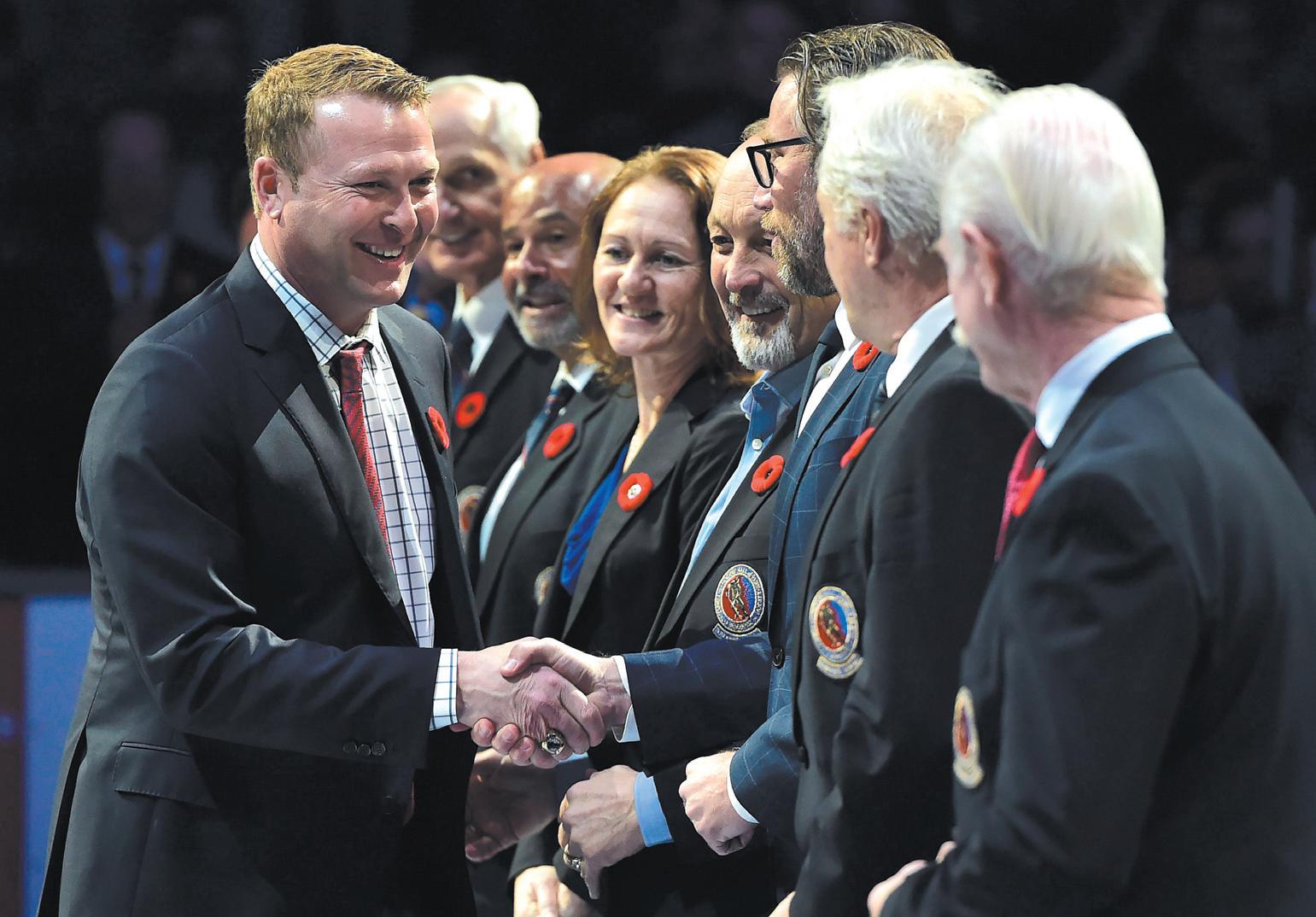
the ice at the old Montreal Forum when he was a toddler. Now his son is in the hall.
NHL commissioner Gary Bettman, diminutive winger Martin St. Louis, league trailblazer Willie O’Ree, Canadian women’s star Jayna Hefford and Russian great
Cozzi) 1:06 (pp) 2. Prince George Cozzi 5 (Manz, Bochen) 3:03 3. Langley, Livingstone 3 (Capstick) 9:32 (pp) 4. Prince George, Schleppe 1 (Conlin, Lee) 11:35 5. Prince George, Manz 8 (Cozzi) 17:27 Penalties – Livingstone LA (interference) 0:07, Keranen PG (holding) 9:04, Coyle PG (holding) 12:57. Third Period 6. Prince George, Manz 10 (Cozzi, Coyle) 5:07 7. Prince George, N.Poisson 5 (Bochen, Keranen) 5:48 8. Prince George, Cozzi 6 (Ahac) 8:27 9. Prince George, N.Poisson 6, 10:55 Penalties – Kovich LA (roughing), MacDonald PG (unsportsmanlike conduct) 10:55. Shots on goal by Langley 8 7 8 -23 Prince George 7 17 14 -38 Goal – Langley, Fleming (L,9-9-0, 24 shots, 20 saves) and at 17:27 of second, Rolfe (14-10); Prince George, Neaton (W,12-3-1, 23-22). Power plays – LA: 1-2; PG: 1-2. Referees – Evan McKinnon, Graedy Hamilton; Linesmen
Yakushev
announced
in June.
and St. Louis were eligible to be selected by the 18-member committee for the first time. Nominees require 75 per cent of the vote to make the cut.
The NHL has grown from 24 to 31 teams since Bettman took over as commissioner in 1993, with annual revenue ballooning to nearly US$5 billion. He’s also overseen three lockouts, including the cancellation of the entire 2004-05 season, with another work stoppage potentially looming in either 2020 or 2022.
St. Louis went from not being drafted to a 17-year NHL career that included 1,033 points and a Hart Trophy as league MVP. The five-foot-eight winger won the Stanley Cup with the Tampa Bay Lightning in 200304 and was on Canada’s men’s Olympic team that brought home gold in 2014. O’Ree became the NHL’s first black player when he was called up by the Boston Bruins in 1958. He had a long career in the minors, but played just 45 NHL games. O’Ree returned to the league’s fold in 1996 as an ambassador.
Named to the Order of Canada in 2008, the 83-year-old said the Hall of Fame ring is a symbol of the barriers he broke down and the doors he opened.
A giant in the women’s game, Hefford won four Olympic gold medals and seven world championships for Canada. Yakushev, meanwhile, starred for the USSR at the 1972 Summit Series against Canada, scoring seven goals to tie for the tournament lead. The 71-year-old won Olympic gold in 1972 and 1976, led his country to seven world titles and was elected to the IIHF Hall of Fame in 2003.
Gemma KARSTENS-SMITH Citizen news service
SURREY — There have been a lot of early mornings for the B.C. Lions this week.
Practices and team meetings were bumped up in an attempt to get players working on eastern time while they trained at the club’s facility in suburban Vancouver.
The modifications are simply part of being a crossover team, said Lions head coach Wally Buono.
“I don’t think playing in the east will have any effect on their body clocks because we’ve turned their body clocks so they’re more on eastern time,” he said after practice on Thursday.
The Lions (9-9) will battle the host Hamilton Tiger-Cats (8-10) on Sunday in the CFL’s East semifinal.
The CFL’s crossover rule started in 1996, and comes into effect if the fourth-place team from one division has more points than the third-place team from the other division – the Lions are the 11th crossover team, with all coming from the West.
A crossover team never has reached the Grey Cup game, though some have come close.
Last year, the Saskatchewan Roughriders beat the Ottawa Redblacks in the Eastern semi, then lost a tight battle with the Toronto Argonauts in the division final.
The Argos went on to capture the championship, beating the Calgary Stampeders 27-24.
This year marks the fifth time B.C. has clinched the league’s crossover spot, sending the squad

across the country to kick off the playoffs.
It’s also the third year in a row that a western team has headed east in the post-season.
Buono said his players have been good about making the necessary adjustments. The team flew out to Hamilton on Thursday afternoon, looking to get in as much practice time as possible in unfamiliar territory.
Everyone on the team knows the importance of a playoff game, he said.
“They’re more intense and they’re more excited,” he said. “If you’ve been involved in playoffs, you know what to expect.”
Practice this week has reflected that intensity, said veteran Lions quarterback Travis Lulay.
“It feels like a locked-in room, a room that understands the opportunity at stake here,” he said.
This will be the fifth time in six years that the Ticats have hosted a playoff game.
B.C. last made a post-season trip to Hamilton in 2009, when the
Lions clawed their way to a 34-27 overtime win over the Ticats. In the East final, the Lions were routed by the Montreal Alouettes 56-18.
Hamilton and B.C. split their season series this year. The Lions came from behind to beat the Ticats 35-32 in overtime on Sept. 22 at B.C. Place. Hamilton responded the following week by steamrolling B.C. 40-10 at Tim Hortons Field. What happened in the regular season doesn’t matter now,

Here’s a look at how the crossover teams have fared in the playoffs:
1997: B.C. Lions lost to Montreal Alouettes in Eastern semi.
2002: Saskatchewan Roughriders lost to Toronto Argonauts in Eastern semi.
2003: B.C. lost to Toronto in Eastern semi.
2005: Saskatchewan lost to Montreal in Eastern semi.
2008: Edmonton Eskimos beat Winnipeg Blue Bombers in Eastern semi, lost to Montreal in Eastern final.
2009: B.C. lost to Hamilton Tiger-Cats in Eastern semi, Hamilton lost to Montreal in Eastern final.
2012: Edmonton lost to Toronto in Eastern semi.
2014: B.C. lost to Montreal in Eastern semi.
2016: Edmonton beat Hamilton in Eastern semi, lost to Ottawa Redblacks in Eastern final.
2017: Saskatchewan beat Ottawa in Eastern semi, lost to Toronto in Eastern final.
Buono said.
“The playoffs are competitive. As soon as the playoffs start, your record goes down the drain,” he said. “You’re not an 8-10 team, you’re a playoff team.”
Both teams are heading into Sunday’s matchup on three-game losing skids, but the Lions coach said he isn’t concerned.
“I always feel like an underdog,” Buono said. “But that’s never stopped us.”
Citizen news service
REGINA — The Saskatchewan Roughriders’ quarterback situation seems to be up in the air as the CFL West Division semifinal quickly approaches, but Chris Jones doesn’t see what all the fuss is about.
The Roughriders head coach refused to tip his hand on whether Brandon Bridge or Zach Collaros will be under centre when the Roughriders host the Winnipeg Blue Bombers on Sunday.
Bridge took the majority of firstteam snaps in practice on Friday, but Collaros has declared himself ready to return to action after suffering an injury in Saskatchewan’s regular-season finale.
“We’ve got both guys preparing to play,” Jones told reporters after practice.
When pressed for more information, Jones replied: “You guys place way too much emphasis on that. We’re going to prepare both guys like they’re going to play, and we’ll see who plays.”
Collaros left Saskatchewan’s Oct. 27 game against the B.C. Lions following a late first-quarter hit from Odell Willis. Collaros stayed in the game for the rest of the drive, but was pulled afterwards.
The oft-injured quarterback appeared in 14 games this season, his most since 2013 with Toronto. He threw for 2,999 yards with nine touchdowns, but was turnover-prone with 13 interceptions.
Bridge passed for 804 yards, one touchdown and three interceptions backing up Collaros.
Despite the pedestrian numbers from their quarterbacks, the Roughriders were an impressive 12-6 this season and challenged the Calgary Stampeders for the CFL West division title down to the wire.
If Jones isn’t putting much emphasis on who he starts against Winnipeg, he is certainly dialed into how much damage Winnipeg linebacker Adam Bighill can do to either quarterback.
Bighill, the western nominee for the CFL’s outstanding defensive player award, was a huge part of Winnipeg’s 10-8 season. He had 105 defensive tackles, four sacks, two interceptions and was tied for the league lead with four forced fumbles.
“He’s a big thorn in everyone’s side. He’s one of the best football players in the league,” Jones said.
“You’ve got to block him. He’s a guy that can play in the middle of the defence and make plays sideline to sideline. Richie (Winnipeg defensive co-ordinator Richie Hall) has done a good job this year of trying to match him on backs, and get him in matchups where he can’t use his blitzing ability.”

The Canadian oil industry reacted with frustration and bitterness Friday after a U.S. judge ordered a halt to the Keystone XL pipeline project until it passes further environmental review.
The decision on Thursday means longer delays in finding a way to drain a glut of oil in Western Canada that has driven price discounts to multi-year highs and stalled investment, said Tim McMillan, CEO of the Canadian Association of Petroleum Producers.
“It’s a vulnerability that we can’t control and will cost us hundreds of millions if not billions of dollars as a nation and thousands of jobs,” he said Friday.
“And the only reason it does have such a massive impact on us is self-inflicted wounds here at home on projects that could have given us resilience against this sort of ruling.”
U.S. District Judge Brian Morris found Thursday that the potential impact of TransCanada Corp.’s $10-billion pipeline had not been considered as required by federal law. Environmentalists and Native American groups had sued to stop the project, citing property rights and potential oil spills.
The judge, who was appointed by former president Barack Obama, issued a federal court order blocking a Trump administration permit for construction of the pipeline.
TransCanada remains committed to the project, spokesman Terry Cunha wrote in a brief email on Friday, adding the company has received the judge’s ruling and is reviewing it.
The Calgary-based pipeline company’s shares fell by as much as 2.75 per cent in early trading but recovered to $51.49, down 1.4 per cent, by noon Pacific time on the Toronto Stock Exchange.
Last January, TransCanada said it had secured shipping commitments of roughly 500,000 barrels per day on the line, including a deal with the Alberta government to ship 50,000 bpd of provincially owned crude.
“This ruling by a foreign court underscores once again the urgent need for Canada to build pipelines within our own borders, including the Trans Mountain expansion,” said Alberta Energy Minister Marg McCuaig-Boyd in Edmonton.
“Today’s differential tells the
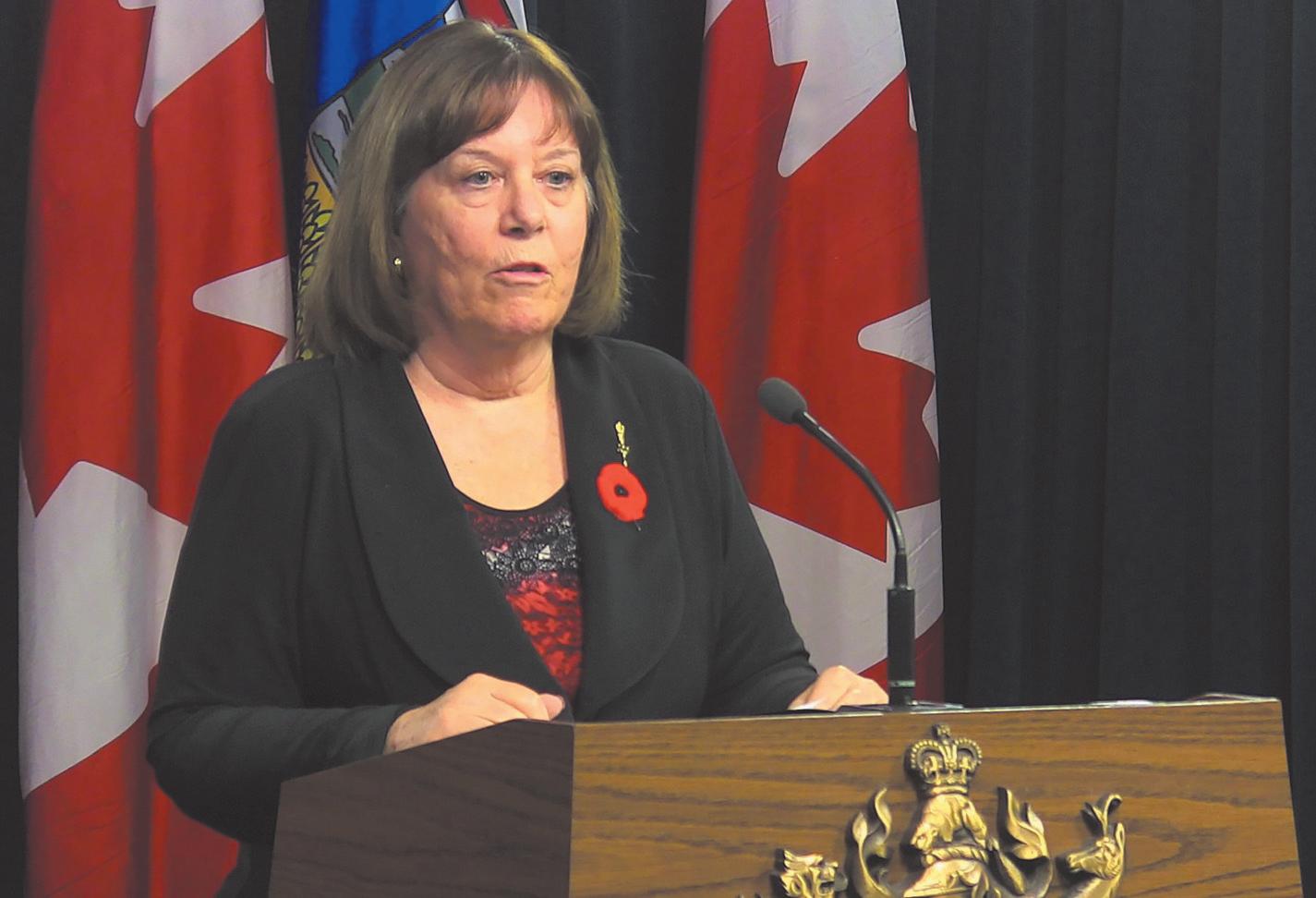
story. We’re giving away our resources cheap.”
The federal government bought Trans Mountain and its expansion project for $4.5 billion last summer only to have the Federal Court of Appeal strike down its National Energy Board approval, citing inadequate Indigenous consultation and failure to consider impacts on marine environment.
Ottawa decided not the appeal the ruling and is instead working to address issues identified by the court.
Vanessa Adam, a spokeswoman for Natural Resources Minister Amarjeet Sohi, said the Liberal government is “disappointed” by the Montana court’s decision because Keystone XL is needed for jobs in Canada and successful energy exports.
Other Keystone XL shippers include major Calgary-based oilsands producers Canadian Natural Resources Ltd., Suncor Energy Inc. and Cenovus Energy Inc.
The setback in the United States is a “wake-up call” that shows how important it is for Canada to build pipelines like Trans Mountain that take oil to tidewater, said Chris Bloomer, CEO of the Canadian Energy Pipeline Association.
The shortage of export pipeline space as oilsands production grows in Alberta has been blamed for the recent widening of the difference between Western Canadian Select bitumen blend and New York-traded West Texas Intermediate to as much as US$52 per barrel, more than three times the typical discount.
Analysts say as much as 110,000 barrels a day of crude oil is currently being left in the ground in Western Canada rather than being produced and sold at unprofitable prices. Oil storage levels are at record highs.
“This is the world’s longest tug of war, with western Canadian oil prices as the rope,” said Zachary Rogers, an oil markets research
the price of oil which drove the loonie to a more than four-month low.
The S&P/TSX composite index closed down 83.03 points at 15,274.44. but up from 15,150.15 a week ago.
The December crude contract was down 48 cents at US$60.19 per barrel to the lowest level since February.
The cannabis-heavy health-care sector led on the downside, followed by technology, consumer discretionary, energy and materials.
Utilities gained the most and industrials rose on a partial rebound by Bombardier Inc.
In New York, the Dow Jones industrial average closed the week down 201.92 points to 25,989.30. The decrease was more than offset by three days of tripledigit gains, including a 545-point increase Wednesday in the wake of the U.S. midterm elections.
The S&P 500 index was down 25.82 points at 2,781.01, while the Nasdaq composite fell by 123.98 points to 7,406.90.
The Canadian dollar traded lower at 75.72 cents US compared with an average of 76.25 cents US on Thursday.
Canada’s main stock index ended a positive week by closing lower Friday as the energy sector sank on a further drop in
The December natural gas contract was up 17.6 cents at US$3.72 per mmBTU.
The December gold contract was down US$16.50 at US$1,208.60 an ounce and the December copper contract was down 5.15 cents at US$2.68 a pound.

analyst at Wood Mackenzie.
The judge’s ruling doesn’t kill the Keystone XL project, he said in a report, adding he expects the fight to continue in the courts or lead to an additional U.S. State Department review followed by President Donald Trump approving the line again.
An appeal of the U.S. court decision might allow TransCanada to stay on schedule with Keystone XL but it’s more likely that the appeal will fail, said Fred Jauss, an American partner at the international law firm Dorsey & Whitney, noting the appeal court’s rocky relationship with Trump directives.
In that case, he said, the State Department will have to provide a new environmental review, likely delaying the project by several months and making its expected construction start next spring unlikely.
The 1,897-kilometre pipeline would carry as much as 830,000 barrels of crude per day from
Hardisty, Alta., to Steel City, Neb., where it would be sent on through a half dozen states to refineries on the Gulf Coast.
Becky Mitchell, chairwoman of the Northern Plains Resource Council, a plaintiff in the Montana legal action against Keystone XL, said her environmental organization is thrilled with the ruling. The company and opponents of the project have been in a decadelong dispute that has involved standoffs between protesters and law enforcement.
In 2008, the State Department issued a presidential permit for the pipeline and TransCanada filed paperwork to expand the project. After years of legal wrangling, Obama rejected the permit in 2015.
The company responded by seeking $15 billion in damages, an action it withdrew when a newly elected Trump signalled he would approve the project in February 2017.
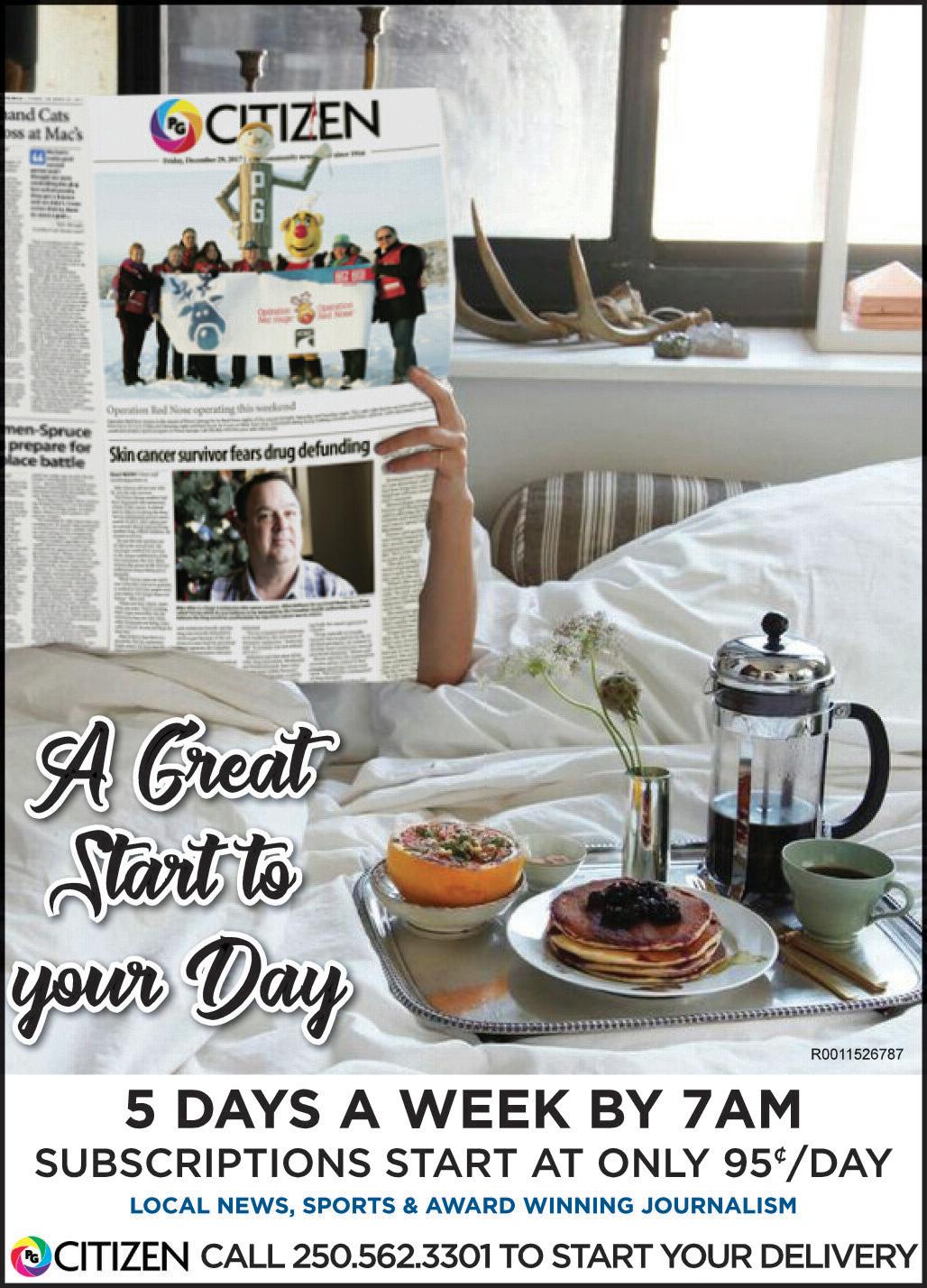
Arare lung disease killed Elaine Pagels’s six-year-old son, and then about a year later her husband fell to his death while mountain climbing. After that Job-like run of tragedies, no one would have blamed Pagels if she had decided to “curse God and die.”
But she held on. Through rage and terror and despair so overwhelming that it made her faint, she held on.
“I had to look into that darkness,” she says at the opening of her new memoir, Why Religion?
“I could not continue to live fully while refusing to recall what happened.”
Pagels acknowledges that “no one escapes terrible loss,” but as the country’s most popular historian of religion, she brings a unique reservoir of spiritual wisdom to bear on the thousand natural shocks that flesh is heir to. A MacArthur “genius” and a professor at Princeton University, she has long been one of those rare bilingual academics capable of speaking to lay and scholarly readers.
Her foundational work, The Gnostic Gospels (1979), revolutionized our concept of early Christianity, won a National Book Award and became a bestseller. Her subsequent books, including Adam, Eve and the Serpent, The Origin of Satan and Revelations, have continued to complicate conventional understandings of Christianity and trace the persistence of ancient attitudes in modern society.
Now, at 75, with disdain for “the facile comfort that churches often dole out like Kleenex,” Pagels leads us through the remarkable events of her life by considering the consolations and the tortures of faith.
Why Religion? is, as its subtitle states, a personal story, but it’s also a wide-ranging work of cultural reflection and a brisk tour of the most exciting religion scholarship over the past 40 years.
Given Pagels’ famously ecumenical approach, it’s surprising to hear that her spiritual journey began at a stadium revival preached by Billy Graham. At 15, vaguely curious, she tagged along with some Christian friends to the Cow Palace outside San Francisco. Her family was ferociously secular, but when Graham invited the assembled crowd of 23,000 people to be born again, Pagels found his invitation irresistible. In tears, she stepped forward to be saved.
“That day opened up vast spaces of imagination,” she writes. “It changed my life, as the preacher promised it would – although not entirely as he intended.”
That reference to “imagination” – the first of many laced through this memoir – foreshadows her eventual break from orthodox Christianity, but it also suggests her determination to think creatively about sacred texts and the influence they wield. One of the bedrocks of her philosophy is that “what we imagine is enormously consequential.”
While others, like her parents, simply dismissed religion as a chaotic system of fairy tales, Pagels has felt impelled to keep asking, “Why is religion still around in the twenty-first century?”
It’s a question that has sent her searching
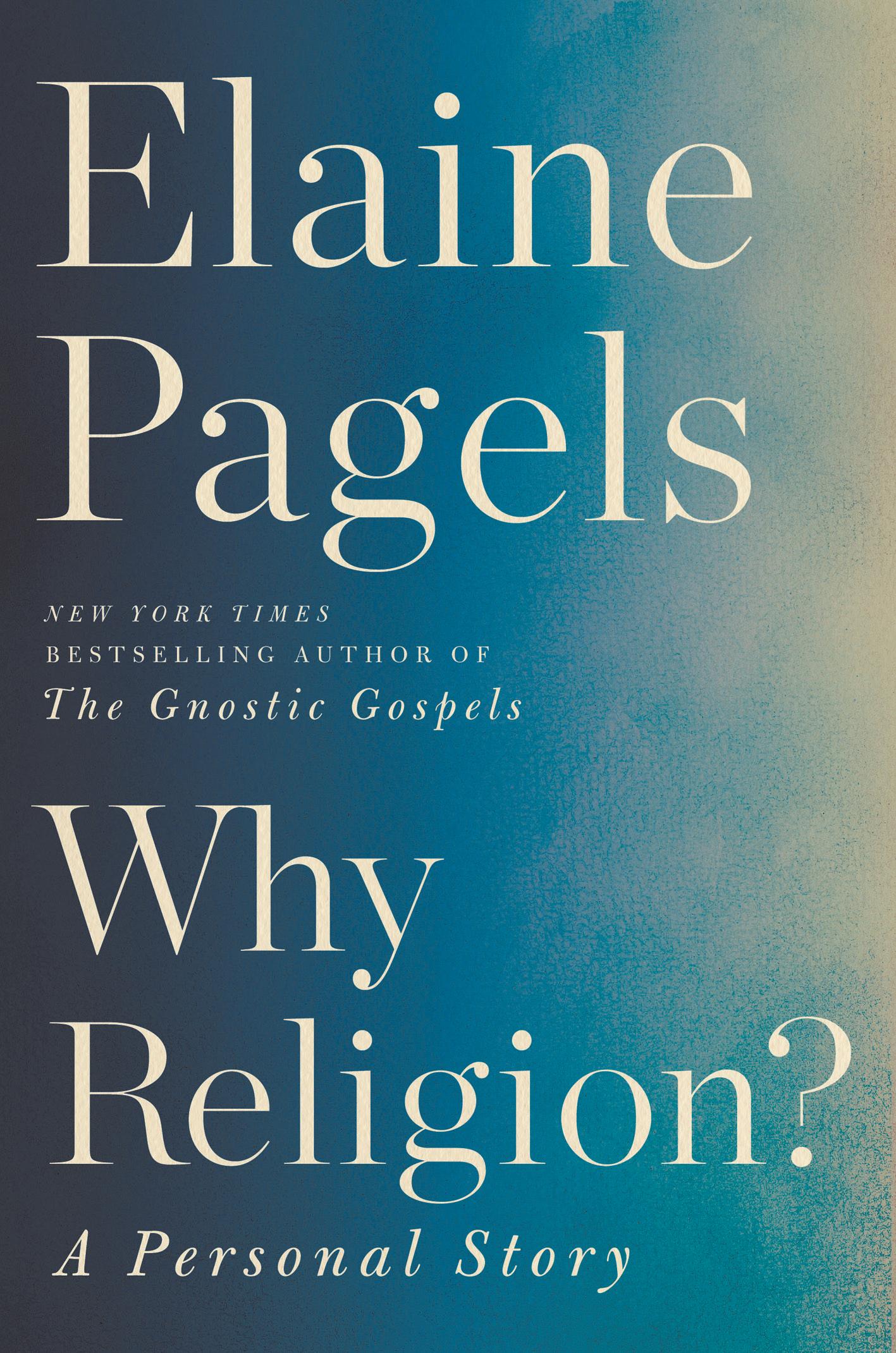
around the world and across millennia.
But in her 20s, while studying modern dance with Martha Graham, she was interested in many things. With a childlike sense of awe, she applied to five graduate schools in five fields. She never says so (she’s far too modest), but it’s clear she could have excelled in any of them. Harvard University told her they already had too many women in their religion program – why waste openings on the flighty sex? – but if she were still interested a year later, she could apply again. Fortunately, she did, and before long she was working on a “top secret” cache of Egyptian documents discovered in 1945 –heretical gospels long rumored but considered lost in the sands of time.
“I was amazed,” she writes, “to find that some of these texts spoke words I’d never heard before yet longed to understand.”
Why Religion? – a counterpoint of sorts to Huston Smith’s Why Religion Matters
(2000) – moves freely among the intimate details of Pagels’ life, her marriage to the brilliant physicist Heinz Pagels and the challenges of upending centuries of calcified belief. Along the way, she describes the terrors of raising a terminally ill child, considers the ethics of futile medical interventions and testifies to the temptation and havoc of denial.
She is consistently, sometimes hilariously humble. She mentions that she started reading Greek the way one of us might mention that we started watching Unbreakable Kimmy Schmidt.
World-famous acquaintances – Jerry Garcia, Andrei Sakharov, Oprah Winfrey –are noted without a whiff of arrogance. Her controversial professional triumphs and critical discoveries are recounted with headspinning speed.
Indeed, Elaine Pagels’ previous books, which are concise to a fault, are not always
well served by being so aggressively summarized in this new book.
But when the memoir arrives at the death of her little boy, Pagels’ tone feels bracingly appropriate.
“I can tell only the husk of the story.” It felt, she says, “like being burned alive.”
Grasping for some explanation, pricked with the cruel sense that illness is the punishment for sin, she began to search for the source of this self-recrimination. Suddenly, the Bible texts seemed stained with dread.
“Working hard to stay steady, or seem to, I could no longer afford to look through a lens that heaps guilt upon grief,” she writes.
“Although I wasn’t a traditional believer and didn’t take such stories literally, somehow their premises had shaped my unconscious assumptions. Now I had to divest myself of the illusion that we deserved what had happened; believing it would have crushed us.”
That unspeakable experience confirmed her understanding of the influence of the Bible’s stories.
“Whether we believe them or not, they are transmitted in our cultural DNA, powerfully shaping our attitudes toward work, gender, sexuality, and death,” she writes.
“I sought to untangle my own responses, while sensing how powerfully our culture shapes them.”
One gets the impression that studying herself in the crucible of grief was often the lone activity that kept her sane.
Feeling confused and overwhelmed, she turned to the New Testament, the Gnostic gospels of the Nag Hammadi library and Buddhism. In theory and practice, her life demonstrates the freedom that comes from breaching the boundaries of orthodoxy and accepting insight wherever it might be hiding.
Those include mystical places that most academics would be reluctant to enter. But Pagels is as fearless as she is candid.
In the depths of her sorrow, she recalls uncanny coincidences, acts of precognition, ghostly visitations and even a confrontation with a demon one night in the hospital. These episodes are never submitted as factual evidence of supernatural intervention. Instead, Pagels offers her subjective experiences to demonstrate the way our lives are molded by ancient stories, consciously and unconsciously.
Still, the facts are as hard as a gravestone: no saint interceded to fill her son’s lungs. No angel caught her husband as he fell from Pyramid Peak.
And no ray of divine inspiration eventually illuminates a greater good in their deaths. But that’s not the end of the story for Pagels. With the twinned spirits of seeker and scholar, she kept studying the Gospels, the letters of Paul, the Gnostic texts and the insights of Buddhism and Trappist monks until she understood that suffering is an essential and common element of human life. Toward the end, she writes, “my own experience of the ‘nightmare’ – the agony of feeling isolated, vulnerable, and terrified –has shown that only awareness of that sense of interconnection restores equanimity, even joy.”
When that ray of happiness finally pierces the gloom in her life, Why Religion? feels miraculous and yet entirely believable.
In the fall of 2014, while working at a church in Saskatoon, I took the opportunity to attend a Remembrance Day service at the city’s SaskTel Centre. It was just three weeks after that terrible day in Ottawa when a Canadian reservist, Cpl. Nathan Cirillo, was fatally shot at Ottawa’s War Memorial. As we remember, the shooter in that case, then stormed the Parliament Centre Block before being gunned down by Sergeant at Arms Kevin Vickers. With that tragic incident fresh on everyone’s mind it wasn’t surprising that the memorial service that day in Saskatoon was the
largest in its history. With more than 10,000 people standing in silence at the 11 o’clock hour in honour of all of Canada’s fallen for our nation, it was a moment to remember in more ways than one. The drama on Parliament Hill on Oct. 22, 2014 captures well the reason for this day’s importance and meaning. Vivid pictures of true sacrifice always stir our hearts about what’s really important in life.
For one thing, a day such as this is a continual reminder of the obvious existence of good and evil in our world. Recent shootings remind us again that it is naive for us to ignore the existence of this dichotomy. Remembrance Day and all human history demonstrate that this great divide is more than mere religious dogma. But faith can help us understand it. Christianity, for example, describes this difference in terms of light and darkness, righteousness and wickedness, or God and Satan. But it also holds out the vibrant hope that darkness can and will ultimately be overcome by eternal light. This, of course,
is the meaning of Jesus’s historic resurrection. It demonstrates that a V-day over the world’s evil is absolutely certain. Remembrance Day acknowledges that war is an inevitable part of life. There are wars and then there are wars. Some exist out of defense for what really matters. Though we may rightly try to do everything possible to avoid war, truth, security, and freedom in this world will always be threatened by evil powers of one kind or another. Conflict takes many shapes of which war is the ultimate expression. That which is truly good and right, is worth the most diligent pursuit and defense every day of our lives.
Yet it’s also important to remember that this kind of devotion will never happen without tremendous cost. Sacrifice for what is good and true is at the heart of what this day is all about. And on this 100th anniversary of the end of the First Great War, Remembrance Day offers a special opportunity for us to conscientiously thank God for our freedom. But it’s also a day to remember the significance of sacrifice in general. And, for Christians, this is best epitomized in the greatest sacrifice of all time – when the perfect man willingly laid down his life on a Roman cross for the sin of the whole world.

Google is promising to be more forceful and open about its handling of sexual misconduct cases, a week after thousands of high-paid engineers and others walked out in protest over its male-dominated culture.
Google bowed to one of the protesters’ main demands by dropping mandatory arbitration of all sexual misconduct cases. That will now be optional, so workers can choose to sue in court and present their case in front of a jury.
It mirrors a change made by ride-hailing service Uber after complaints from its female employees prompted an internal investigation.
The probe concluded that its rank had been poisoned by rampant sexual harassment.
“Google’s leaders and I have heard your feedback and have been moved by the stories you’ve shared,” CEO Sundar Pichai said in an email to Google employees. “We recognize that we have not always gotten everything right in the past and we are sincerely sorry for that. It’s clear we need to make some changes.” Thursday’s email was obtained by The Associated Press.
Last week, the tech giant’s workers left their cubicles in dozens of offices around
the world to protest what they consider management’s lax treatment of top executives and other male workers accused of sexual harassment and other misconduct.
The protest’s organizers estimated that about 20,000 workers participated.
The reforms are the latest fallout from a broader societal backlash against men’s exploitation of their female subordinates in business, entertainment and politics - a movement that has spawned the “MeToo” hashtag as a sign of unity and a call for change.
Google will provide more details about sexual misconduct cases in internal reports available to all employees.
The breakdowns will include the number of cases that were substantiated within various company departments and list the types of punishment imposed, including firings, pay cuts and mandated counselling.
The company is also stepping up its training aimed at preventing misconduct. It’s requiring all employees to go through the process annually instead of every other year.
Those who fall behind in their training, including top executives, will be dinged in annual performance reviews, leaving a blemish that could lower their pay and make it more difficult to get promoted.
But Google didn’t address protesters’ de-
mand for a commitment to pay women the same as men doing similar work.
When previously confronted with accusations that it shortchanges women – made by the U.S. Labor Department and in lawsuits filed by female employees – Google has maintained that its compensation system doesn’t discriminate between men and women.
The changes didn’t go far enough to satisfy Vicki Tardif Holland, a Google employee who helped organize and spoke at the protests near the company’s Cambridge, Massachusetts, office last week.
“While Sundar’s message was encouraging, important points around discrimination, inequity and representation were not addressed,” Holland wrote in an email responding to an AP inquiry.
Nevertheless, employment experts predicted the generally positive outcome of Google’s mass uprising is bound to have ripple effects across Silicon Valley and perhaps the rest of corporate America.
“These things can be contagious,” said Thomas Kochan, a Massachusetts Institute of Technology management professor specializing in employment issues. “I would expect to see other professionals taking action when they see something wrong.”
Some employers might even pre-emptively adopt some of Google’s new policies,
given its prestige, said Stephanie Creary, who specializes in workplace and diversity issues at the University of Pennsylvania’s Wharton School. “When Google does something, other employers tend to copy it,” she said.
Google got caught in the crosshairs two weeks ago after The New York Times detailed allegations of sexual misconduct against the creator of Google’s Android software, Andy Rubin.
The newspaper said Rubin received a $90 million severance package in 2014 after Google concluded the accusations were credible.
Rubin has denied the allegations.
Like its Silicon Valley peers, Google has already acknowledged that its workforce is too heavily concentrated with white and Asian men, especially in the highest-paying executive and computer-programming jobs. Women account for 31 per cent of Google’s employees worldwide, and it’s lower for leadership roles. Critics believe that gender imbalance has created a “brogammer” culture akin to a college fraternity house that treats women as sex objects.
As part of its ongoing efforts, Google will now require at least one woman or a nonAsian ethnic minority to be included on the list of candidates for executive jobs.
This is the time of year when many business owners turn their thoughts to the future. We wonder if our sales will hold in the coming year; whether our expenses are going to rise. We try to predict whether we have the right team, right strategies, and the ability to face the future. Larger organizations often spend months developing a plan and a budget for the future, doing strategic and business planning for the upcoming year. They turn to experts and ask the question, “What do you think will happen?” As my clients start planning for 2019 and consider opportunities and threats to their businesses, sometimes they turn to me for advice. As a result, I have been doing my research, in order to help them determine the best strategies for 2019 and beyond.
Christopher Barraud, an economist out of Paris ranked by

Bloomberg as the most accurate forecaster of the American economy since 2012, says that change is in the air. He suggests that due to the US trade war with China, foreign tariffs to steel and other goods, and a possible oil price increase, the US might be in for a slowdown in 2019. These possible slowdowns could be a challenge to many companies that are reliant on discretionary income. Less effected will be businesses in areas that are fortunate enough to have larger projects or more diverse economic balance.
Business Leader Magazine’s Barney Cotton suggests that data charges for mobile phones will continue to drop. Secu-
rity challenges will continue to plague technology providers, and Amazon and Netflix will continue their expansion into the bricks and mortar business with Amazon expanding to Europe.
One doesn’t need to look far to see reoccurring predictions coming in the next year or two. Selfdriving cars will be a widespread reality. Also, numerous forecasts of some automakers moving away from gasoline and focusing solely on electric vehicles are appearing.
Worldwide trends are going to continue to engage more people in digital media and less with television. It is expected that by 2019, the average person will be spending 45 minutes watching video online. For business owners this might change the way that they market and interact with their customers. Audio commands are going to
A few months ago, I decided it was time to hire a housekeeper – someone who could come once, maybe twice a month to my small, 650-square-foot downtown apartment and give it a good scrub.
In addition to concerns about trustworthiness, thoroughness and timeliness, price sensitivity factored into my decision-making process. So, when I learned of a housekeeper who charged only $20 per hour for his cleaning services, my first response was to assume that where he shined in the affordability department, he must certainly be lacking in the other areas of import to me.
Nonetheless, I gave Max – a young, seemingly sheepish man from the Prairies – a ring and scheduled my first appointment. I was hopeful, but also prepared for disappointment. The price was just too good to be true, I assumed.
My assumptions proved wrong, and very quickly. Not only were Max’s services priced reasonably, but also he proved to be incredibly trustworthy, thorough and efficient.
After the third or fourth cleaning, I decided that what Max was charging was not commensurate with his services. A raise was in order. Graciously, and with a shy grin of appreciation, Max accepted.
A few weeks later, hurried and walking out the door, I mentioned to Max how terrific his services were and that he could charge his other clients much more for his services – at least double – and people would still hire him.
Albeit in a small way, I was proud of myself. Max needed validation, I reckoned, and I was more than happy to give it to him. He also needed a confidence boost. Why else would he be charging only $20 per hour? Max clearly didn’t recognize his own value, and now, perhaps in a small way, my words of encouragement might give him a bit more courage to charge his worth.
As I neared my front door, I saw Max crying. My words of encouragement most certainly had an impact, I believed.
“Max,” I said, “you do such great work. Has no one ever told you that?”
“Of course they have,” he replied. “That’s not why I’m crying though.” I was bewildered.
“I’m not crying because you told me I was worth more money. I’m crying because you assumed that it’s the money that is important to me.” Max went on to explain that charging people more money comes with greater expectations of quality and perfection. And while he knows he does a great job, the added stress of living up to others’ expectations was not worth it to him. Moreover, he explained, he has never cleaned homes for the money –that was settled a long time ago for him with a trust. He cleans homes to be part of a community, to be
welcomed in other people’s homes and to take care of others. He also revealed that his learning disability prevents him from full-time work, and that cleaning homes gives him a sense of purpose. None of it is about the money.
My bewilderment turned to shame.
Vulnerably and with great kindness, Max shared with me aspects of his life that I was oblivious to. Aspects that I dismissed away with my assumption about what he should be charging and why he wasn’t.
In reflection on the day’s events, Max gave me occasion to pause and to examine myself. How often do I – do we all – make assumptions about others, sometimes even with the best intentions?
What could be possible if we stopped on occasion to ask “Do I know this is 100 per cent true and correct?”
At home and in the workplace, what could be revealed if we sought to understand “why” rather than asserting “that.”
I’m grateful that Max had the courage to challenge my assumptions – a gift not often so freely given, especially in an employee-employer relationship. In exchange, I’m trying to be hawkishly vigilant about my own assumptions and all of the places they show up.
Casey Miller, president of Six and a Half Consulting, is a leadership and team development specialist. His consultancy teaches organizations the skills needed to create motivated and inspired workplaces.

continue to drive technology and change how people are interacting with apps and devices. Due to an overabundance of digital interruptions and the onslaught into peoples’ personal lives, we will start to see significant number of people who take time away from technology. Don’t be surprised if you see technology addiction groups starting up.
As more people become concerned about the long-term environmental impact of plastics, look for a move away from traditional plastic packaging towards more biodegradable plastics in the food industry. In terms of food preparation, mushrooms will continue to become more popular as a food and medicine as we see a continued trend towards less meat and more plants! Medicines will continue to become more user specific based on genomes and virtual reality technology will probably start to play a part in some mind over body medical treatments.
China, the world’s largest polluter will start to work on cleaning up the environment as health care costs related to pollution become prevalent. Expect to see advances in pollution treatment of waste water. Business is being stretched by this time of turbulent change. Past solutions are not going to have the same effect for businesses in the future. Strategies to ensure success and competitive advantage for our organizations are going to need to be different to be effective. As business leaders we need to determine what the best approach is for this next year and for the future. No one can predict with total accuracy what will happen in 2019. However. if we are prepared for possible outcomes, we can reduce our anxiety substantially and improve the ability of our teams to compete. Dave Fuller MBA, is an awardwinning business coach and the author of the book Profit Yourself Healthy. Email dave@profityourselfhealthy for more information on the strategic planning day for businesses and non profits.


James KONDOPLOS, Bobby SANGHA Special to The Citizen
Few headlines have garnered more attention in the Canadian media this year than the legalization of cannabis.
While the announcement has been well received by some, many employers remain concerned about workplace safety.
Adding to the concern for employers is the human rights duty to accommodate an employee who has been prescribed medical marijuana to deal with a physical or mental health condition. A recent labour arbitration decision out of Atlantic Canada may, however,
help to clarify the law around accommodating employees who use medical marijuana.
In Lower Churchill Transmission Construction Employers’ Association Inc. and IBEW Local 1620 (Tizzard grievance), arbitrator John Roil considered whether an employer’s inability to accurately measure the impairing effects of cannabis in the context of a safety-sensitive position amounted to undue hardship under human rights law.
Harold Tizzard applied for a labourer position with Valard Construction LP. The company was seeking personnel for its contract-




ing work on the Lower Churchill project, the development of a hydroelectric generating facility in Labrador.
When he applied for the job, Tizzard had a medical prescription permitting him to consume up to 1.5 grams of cannabis with THC levels of up to 22 per cent each day. He suffered from pain associated with Crohn’s disease and osteoarthritis.
Valard hired Tizzard on the condition that he successfully complete a pre-employment drug and alcohol test.
Shortly after learning that Tizzard had a prescription for medical marijuana (and failed the test), Valard retained an independent medical expert and sought medi-
cal information from Tizzard.
After considering the medical information and following months of discussion with Tizzard’s union, Valard declined to employ him because of workplace safety concerns.
The issue before arbitrator Roil was whether Valard had failed to accommodate Tizzard’s disability by not providing him with a job.
The arbitrator first considered whether the labourer positions at Valard in which Tizzard was interested were safety-sensitive. He had no difficulty determining that the positions were inherently hazardous because it was clear on

the evidence that the job sites had harsh weather conditions and difficult terrain.
Arbitrator Roil was satisfied that Valard did not have nonsafety-sensitive positions in its operations. He was also satisfied that Tizzard had explored other medication options to alleviate his pain, but none of those options had been successful. The arbitrator was thus left with the question of whether Tizzard could work safely as a labourer while consuming medical marijuana.
Relying exclusively on expert testimony and medical literature, the arbitrator concluded that the impairing effects of cannabis can last up to 24 hours after use, and there was no readily available testing resource in the province at that time to allow an employer to adequately and accurately measure impairment from cannabis following daily or regular use.
Highlighting the unknowns around impairment while on the job and the applicable occupational health and safety legislation, the arbitrator concluded that Valard should not be required to assume the safety risk. He ruled that the inability to measure Tizzard’s impairment posed an unmeasurable safety hazard and accordingly amounted to undue hardship for the employer.
• Evidence remains key. To win at arbitration, employers must be able to speak to the safety-sensitive nature of a particular position and perhaps the business and industry as a whole. Expert medical evidence on the impairing effects of cannabis may be required.
• Residual effects of cannabis use can last up to a full day. While the scientific research is ongoing, there is evidence that the impairing effects of cannabis can last up to 24 hours after use. Indeed, in a position statement released recently, the Occupational and Environmental Medical Association of Canada stated it is “not advisable to operate motor vehicles or equipment or engage in other safety-sensitive tasks for 24 hours following cannabis consumption or for longer if impairment persists.”
• Employee self-reporting on cannabis use and its effects is unreliable. The arbitrator in this case gave short shrift to Tizzard’s self-reporting on the impact of cannabis consumption on his level of functioning. It can be inferred that adjudicators will be likely to reject medical evidence based on similar self-reporting.
• Inability to accurately measure impairment may amount to undue hardship. The arbitrator’s approach to the undue hardship analysis is compelling because it errs (quite rightly) on the side of caution and tips the balance in favour of workplace safety. James D. Kondopulos is a founding member and partner at the employment and labour law boutique of Roper Greyell LLP. Bobby Sangha is an articled student at Roper Greyell LLP.
Citizen news service
The legacy of the First World War will be omnipresent when Canadians stop on Sunday – the 100th anniversary of the end of the War to End All Wars – to pay tribute to those who sacrificed for the country and its way of life.
There will be the red poppies pinned to lapels, and the haunting words of In Flanders Field, penned by Lt.-Col. John McCrae after the Second Battle of Ypres.
There will be the National War Memorial, originally built to commemorate the 60,000 Canadians who died during the war, and Remembrance Day itself, which has been recognized every Nov. 11 – the day the Great War ended – since 1931.
Yet the enduring impact is felt in countless other ways as well, many of them subtle – and not all of them positive, despite the popular refrain that Canada came into its own as a country during the First World War.
That’s because while the war ushered in many changes as the country pulled together during those four bloody years in a way it never had before, it also created deep divides and challenges – some of which remain today.
“The war enhances divisions between French and English, between east and west, between rural and urban. It tends to exacerbate and divide based on income and inequality,” says historian Mark Humphries of Wilfrid Laurier University.
“So these are kind of the lasting legacies for Canadians.”
No event was more divisive – or politically transformative – than the introduction of conscription.
It was the issue upon which the December 1917 federal election was fought and broke the country along both linguistic and geographic lines.
French-Canadians were deeply angry at being forced to fight a war they didn’t believe in, while many rural Canadians and union workers felt betrayed after the government broke its promise during the election to exempt them and their sons.
Mixed into the equation was a great deal of disillusionment as companies made huge profits off the war, even as average workers struggled with low pay and returning veterans faced difficulty finding work or accessing services and benefits.
The result was a rise in Quebec nationalism – the first independence motion was introduced in Quebec’s national assembly in 1919 – and the death of the two-party system as new federal and provincial parties espousing progressive agendas were born.
“You had class parties, regional parties, left-wing and right-wing parties, separatist parties,” says military author and historian Jack Granatstein, who recently co-curated a new exhibit on the last 100 days of the war
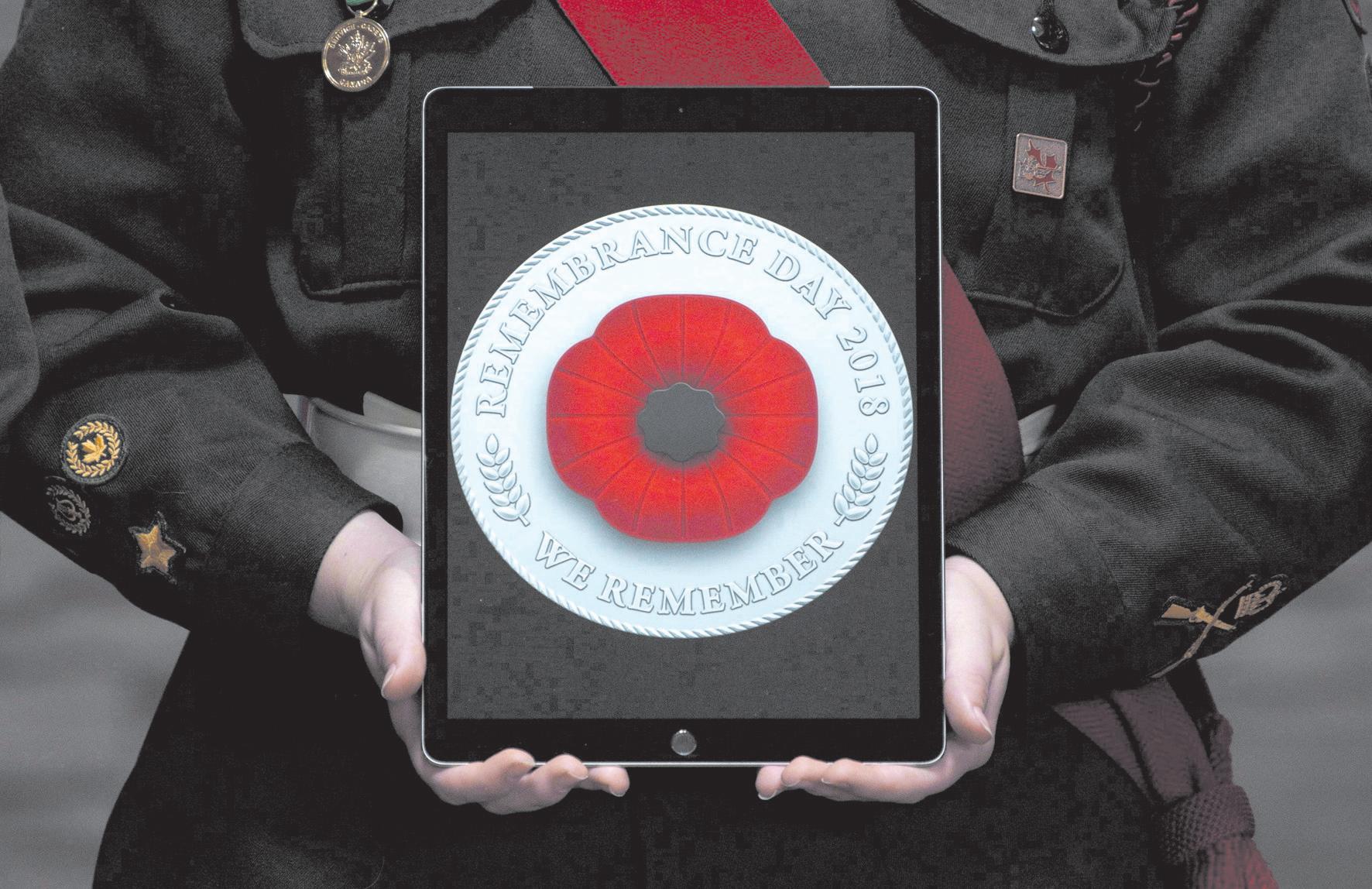
at the Canadian War Museum.
“They all took form as a result of the events that took place in the First World War, and we live with them still. There are five or six parties in the House of Commons and we will never again, I suspect, have a two-party system.”
The emergence of new political parties was only one change in Ottawa as the federal government also took on a more prominent role in Canadians’ lives than ever before – and in ways that continue today.
That included the introduction of a “temporary” income tax to help pay for the war, which by 1918 had left the government around $2 billion in debt – not counting the money that would eventually be needed to support the returning veterans.
Both the income tax and veterans’ support would foreshadow the federal government’s eventual and longstanding role in providing various social services and benefits to Canadians.
“The government that develops in the war, looking primarily after the welfare of soldiers’ families, what develops out of this... is a much stronger state,” says University of Toronto historian John English.
“And income tax gave government the
funds that allowed it to expand more fully in the social-welfare direction. So income tax in that sense was a very progressive reform and made possible what came afterwards.”
Another side effect of the war was the rapid industrialization of Canada’s economy.
Factories had already started to pop up, but the need to mass produce everything from clothing to artillery shells to aircraft and ships pushed things along faster.
While thousands of women entered the workforce to help at those factories, their numbers largely returned to pre-war levels afterward.
More substantially, women – specifically those related to soldiers – were allowed to vote in 1917 for the first time.
The reason was quite political: the government believed those women were more likely to support conscription. Yet while the motivations may have been suspect, the long-term impact is now evident.
The result was that despite short-term disillusionment, the war had a great equalizing effect on many aspects of Canadian society, as women got the right to vote, workers demanded better rights and wages and Canadians railed against graft and corruption.
Citizen news service
Jacqueline Carmichael pored over her grandfathers’ letters for several weeks. She read the long, handwritten notes, and the short ones scribbled perhaps in a hurry as the men hunkered down in trenches while dirt and bullets from the First World War showered over their heads.
Through those disjointed accounts,
Carmichael says she has opened a window to her past that helps her understand the person she is today.
The First World War saw about 75 million letters exchanged between the front lines and the 650,000 men serving in battle. A hundred years later, most notes have vanished or are a distant, yellowed memory. The words are only just visible, and the photos are cloudy.
Carmichael, a resident of Port Alberni and the author of Tweets from the Trenches: Little True Stories of Life and Death on the Western Front, says she wanted to find a way to link the past to the present because both her grandfathers served in the war.
George “Black Jack” Vowel and Charles W.C. Chapman enlisted when they were in their early 20s, just as the war began in 1914, and served till the end of the war in 1919.
“I found in my grandfathers’ letters and journals a way to understand them.”
The war shaped her family and ultimately helped her become the person she is, Carmichael says.
“It was 100 years ago and we see it as this black-and-white war in these blackand-white pictures and it seems very distant and historic but it’s with us in our DNA.”
Tim Cook, a historian at the Canadian War Museum, says the First World War was one of those key events in the nation’s history that shaped the country.
“We were forever changed by the war.” Cook says he’s always been interested in how these men coped and endured the trenches and struggled to hold onto their humanity despite what they saw. Some broke down, some were killed but others kept going forward, fighting and serving.
“I’ve turned to those letters and diaries as a powerful way to understand the motivation and inner lives of soldiers in the First World War.” Carmichael was given the letters and a few of Vowel’s pocket journals by her aunt in 2007.
Some of the notes were on postcards
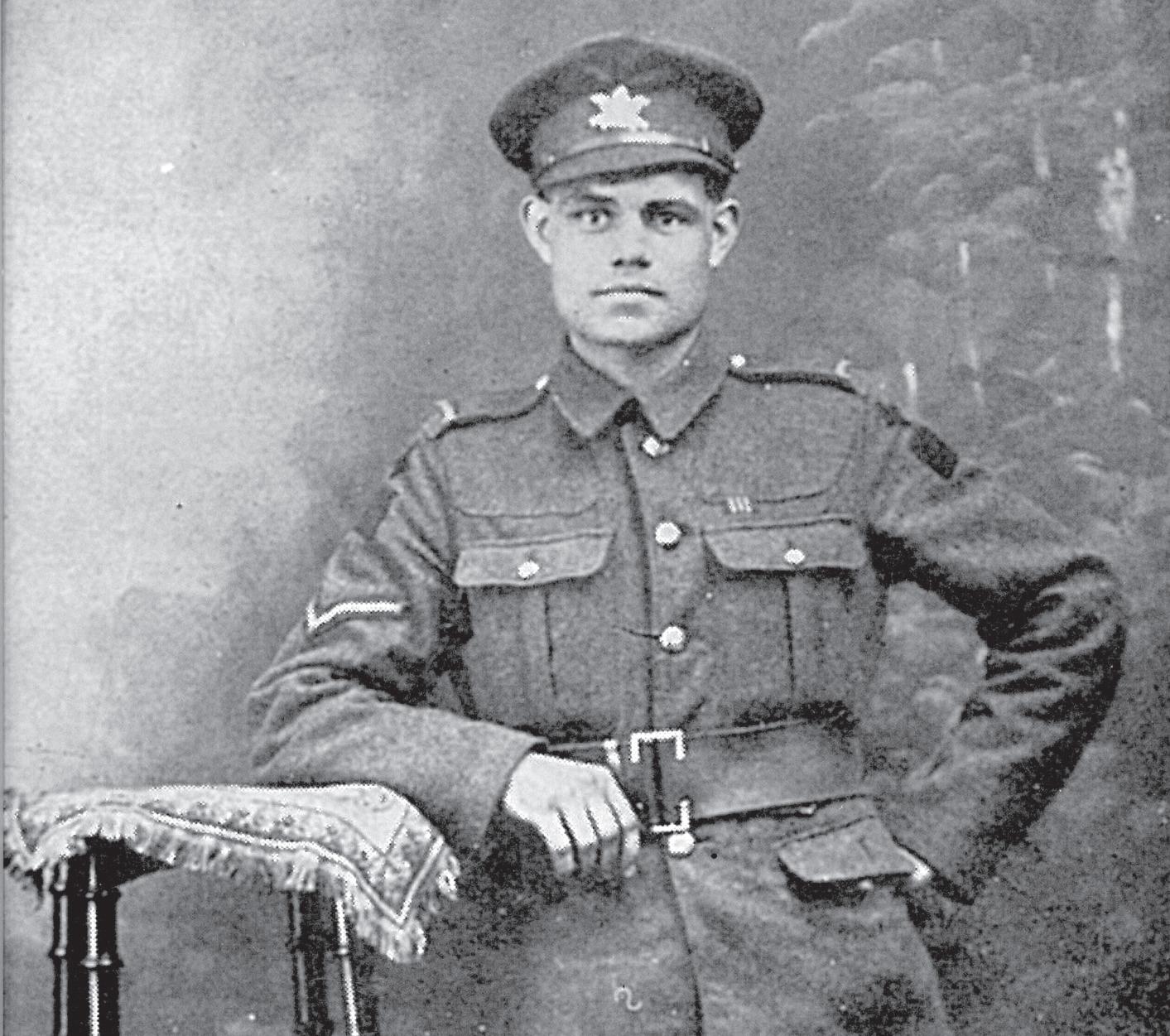
and were short enough that they could have been tweets, she says.
Vowel returned damaged from the war, she says, adding his letters hint at some of the horrors of his experience: “Delivering rations to the front, dodging bullets and mortar fire both. Bullets ripped the dirt up all around me but none of them were marked Black Jack.”
“The front is just the place for a person that likes thrills,” Vowel writes in another letter. “The noise made by high explosive makes your hair stand on end.”
He died in a tractor accident before Carmichael was born.
“I tried to make some sense of what kind of men they became and in turn what kind of fathers they became,” she says of reading the letters. Chapman came out of the war as a loving father and husband, she says.
Grandpa Charlie had a laugh that rumbled in his chest because mustard gas had damaged his lungs, she recalls.
“He was a very kind person, and he had a great sense of humour. I have vivid memories of him whenever I smell pipe tobacco.” When his children asked him about
the war, she says he would chuckle and simply say he never killed anyone, just practiced shooting on bully-beef cans, referring to the rations distributed to soldiers.
“The way that families are shaped, the way that families relate to each other, I think we are affected by better or for worse by that war,” Carmichael says.
Stephen Davies, a Vancouver Island University history professor and director of the Canadian Letters and Images Project, an online archive of the Canadian war experience, says the letters put a human face to the war.
“These are young men, they had loves and lives and ambitions and they liked chocolates and their dogs and had a girlfriend. They are very real accounts of real people.”
When people go to a cenotaph and look at the names, they tend to think of the soldiers as old men. But when people look at their letters, they realize that they were young, Davies says.
“Through those letters we know what rich lives they had and by their loss, you know what a richness that was lost through the war.”
“People were dying for the country and they believed they should come home to a land that was a fairer one, that had better distribution of wealth and that wealth and privilege were not gained by birth but rather by service,” English says.
While it didn’t happen overnight, English believes there was over the long run “an economic democratizing aspect to the war, and also an overall democratizing element to it.”
Many Canadians understand the First World War as the birth of modern Canada, as the country took more ownership over its own affairs and demanded – and was given – respect for the price it paid at Vimy, Passchendaele and other battlefields.
But, says Canadian War Museum historian Tim Cook, there is no denying that with the conscription crisis and the schisms it brought, there was a cost to Canada coming into its own as a country.
“It was a war that nearly broke us as we were stepping out onto the world stage. As we are signing the treaty of Versailles, as we are becoming a part of the League of Nations, we are a broken country.
“And the legacy of that war continues with us to this day.”
Citizen news service
A new survey suggests Canadians of all generations are more likely to honour military veterans by attending a Remembrance Day ceremony this year.
A poll commissioned by Historica Canada, the organization behind the popular Heritage Minutes videos, found a 10-per-cent spike in the number of respondents who planned to take part in a ceremony this year compared to 2017.
The online poll, conducted by Ipsos, found 39 per cent of those surveyed had firm plans to attend a ceremony on Nov. 11 compared to 29 per cent the year before.
The survey found plans were relatively consistent across demographics, with millennial respondents expressing the most consistent enthusiasm for attending Remembrance Day events. It found 41 per cent of 18- to 34-year-olds polled planned to attend, compared to 40 per cent of respondents over 55 and 38 per cent of participants between 35 and 54.
Historica CEO Anthony Wilson-Smith called the findings around millennials gratifying, saying the poll results challenge the theory that the generation with the fewest tangible connections to the two World Wars would be most likely to ignore Remembrance Day.
“We are now at a point where we have to contemplate that the day will come when there aren’t any more World War Two veterans,” Wilson-Smith said in a telephone interview.
“That leaves you to wonder if, when everyone is gone, will people still be able to grasp the significance of war, of sacrifice, of the causes that drove people to war, and the outcomes,” he said.
“The answer would appear to be yes.”
Wilson-Smith speculated that at least part of the surge in interest in Remembrance Day ceremonies stems from the fact that this year’s events will mark the 100th anniversary of the armistice that brought the First World War to an end after four years of strife. But he said the younger generation’s apparent connection to the day may also come from personal ties to those who served in more recent conflicts, such as the war in Afghanistan in which 158 Canadian soldiers and two civilians were killed.
The poll found 95 per cent of those surveyed felt Remembrance Day ceremonies should honour veterans of recent conflicts.
It also found 83 per cent of respondents planned to wear a poppy in the run-up to Nov. 11, with baby boomers showing the most enthusiasm for that idea.
The Ipsos survey was conducted between Oct. 25 and Oct. 29, Historica said.
Deb RIECHMANN Citizen news service
WASHINGTON — Former first lady Michelle Obama blasts President Donald Trump in her new book, writing how she reacted in shock the night she learned he would replace her husband in the Oval Office and tried to “block it all out.” She also denounces Trump’s “birther” campaign questioning her husband’s citizenship, calling it bigoted and dangerous, “deliberately meant to stir up the wingnuts and kooks.”
In her memoir Becoming, set to come out Tuesday, Obama writes openly about everything from growing up in Chicago to confronting racism in public life to her amazement at becoming the country’s first black first lady. She also reflects on early struggles in her marriage to Barack Obama as he began his political career and was often away. She writes that they met with a counsellor “a handful of times,” and she came to realize that she was more “in charge” of her happiness than she had realized. “This was my pivot point,” Obama explains. “My moment of self-arrest.” Obama writes that she assumed Trump was “grandstanding” when he announced his presidential run in 2015. She expresses disbelief

over how so many women would choose a “misogynist” over Hillary Clinton, “an exceptionally qualified female candidate.” She remembers how her body “buzzed with fury” after seeing the infamous Access Hollywood tape, in

which Trump brags about sexually assaulting women. She also accuses Trump of using body language to “stalk” Clinton during an election debate. She writes of Trump following Clinton around the stage, standing nearby and “trying to diminish her presence.”
Trump’s message, according to Obama, in words which appear in the book in darkened print: “I can hurt you and get away with it.”
The Associated Press purchased an early copy of Becoming, one of the most anticipated political books in recent memory. Obama is admired worldwide and has offered few extensive comments on her White House years. And memoirs by former first ladies, including Clinton and Laura Bush, are usually bestsellers.
Obama launches her promotional tour Tuesday not at a bookstore, but at Chicago’s United Center, where tens of thousands of people have purchased tickets – from just under $30 to thousands of dollars – to attend the event moderated by Oprah Winfrey. Other stops on
a tour scaled to rock star dimensions are planned at large arenas from New York City’s Barclays Center to the Los Angeles Forum, with guests including Reese Witherspoon and Sarah Jessica Parker. While some fans have criticized the price as too high, 10 per cent of tickets at each event are being donated to local charities, schools and community groups.
In Becoming, Obama shares both pain and joy. She writes lovingly of her family and gives a detailed account of her courtship with her future husband, whom she met when both were at the Chicago law firm Sidley Austin LLP; she was initially his adviser. Secretaries claimed he was both brilliant and “cute,” although Michelle Obama was skeptical, writing that white people went “bonkers” any time you “put a suit” on a “half-intelligent black man.” She also thought his picture had a “whiff of geekiness.”
But she was more than impressed after meeting him, by his “rich, even sexy baritone” and by his “strange, stirring combina-
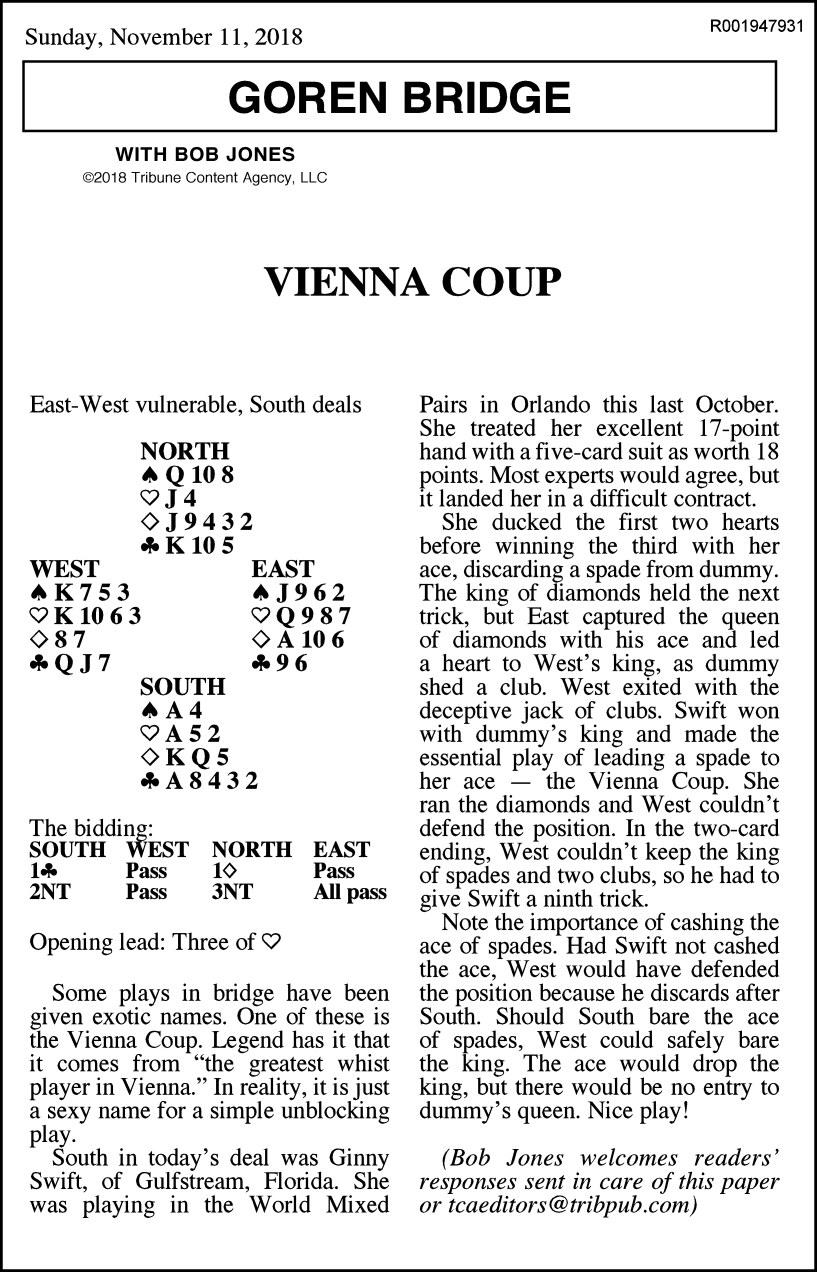
tion” of serenity and power. “This strange mix-of-everything-man,” when she finally let him kiss her, set off a “toppling blast of lust, gratitude, fulfilment, wonder.”
But throughout her husband’s life in politics, she fought to balance public and private needs, and to maintain her self-esteem. She agonized over what she feared was a cartoonish, racist image. She remembered being labeled “angry” and, by the Fox network, “Obama’s Baby Mama.” At times, she feared she was damaging her husband’s 2008 presidential campaign, especially after conservatives seized on a line from one of her speeches – taken out of context, she notes – that for the first time as an adult she was “really proud” of her country. The remarks faded from the news, but she sensed lasting damage, a “pernicious seed,” a “perception” that she was “disgruntled and vaguely hostile.”
As the first black first lady, she knew she would be labeled “other” and would have to earn the aura of “grace” given freely to her white predecessors. She found confidence in repeating to herself a favourite chant: “Am I good enough? Yes I am.”
Becoming is part of a joint book deal with former President Barack Obama, whose memoir is expected next year, that is believed worth tens of millions of dollars. The Obamas have said they will donate a “significant portion” of their author proceeds to charity, including the Obama Foundation.
Widely praised as a gifted orator and communicator, Obama has long said she has no interest in running for office, although she held a few campaign-style rallies before the midterms urging people to register to vote. The rallies were part of her work as co-chairman of the nonpartisan, non-profit organization When We All Vote. Last month, she launched a program to help empower girls worldwide through education. The Global Girls Alliance aims to support about 1,500 grassroots organizations combating the challenges girls encounter in their communities.

Mortensen sorry for racial slur MORTENSEN
LOS ANGELES — Actor Viggo Mortensen has apologized for using a racial slur during a panel discussion about his new film Green Book.
Mortensen, who is white, appeared Wednesday at the event with his co-star, Mahershala Ali, and director Peter Farrelly. Mortensen told The Hollywood Reporter on Thursday he was making the point that many people casually used the slur in 1962, when the movie takes place. He says he had “no right to even imagine the hurt that is caused by hearing the word in any context.” He says he intended to “speak strongly against racism” and is sorry he used the word.
In Green Book, Mortensen’s character is hired to drive an African-American pianist on a concert tour in the South. The movie is due in theatres later this month.
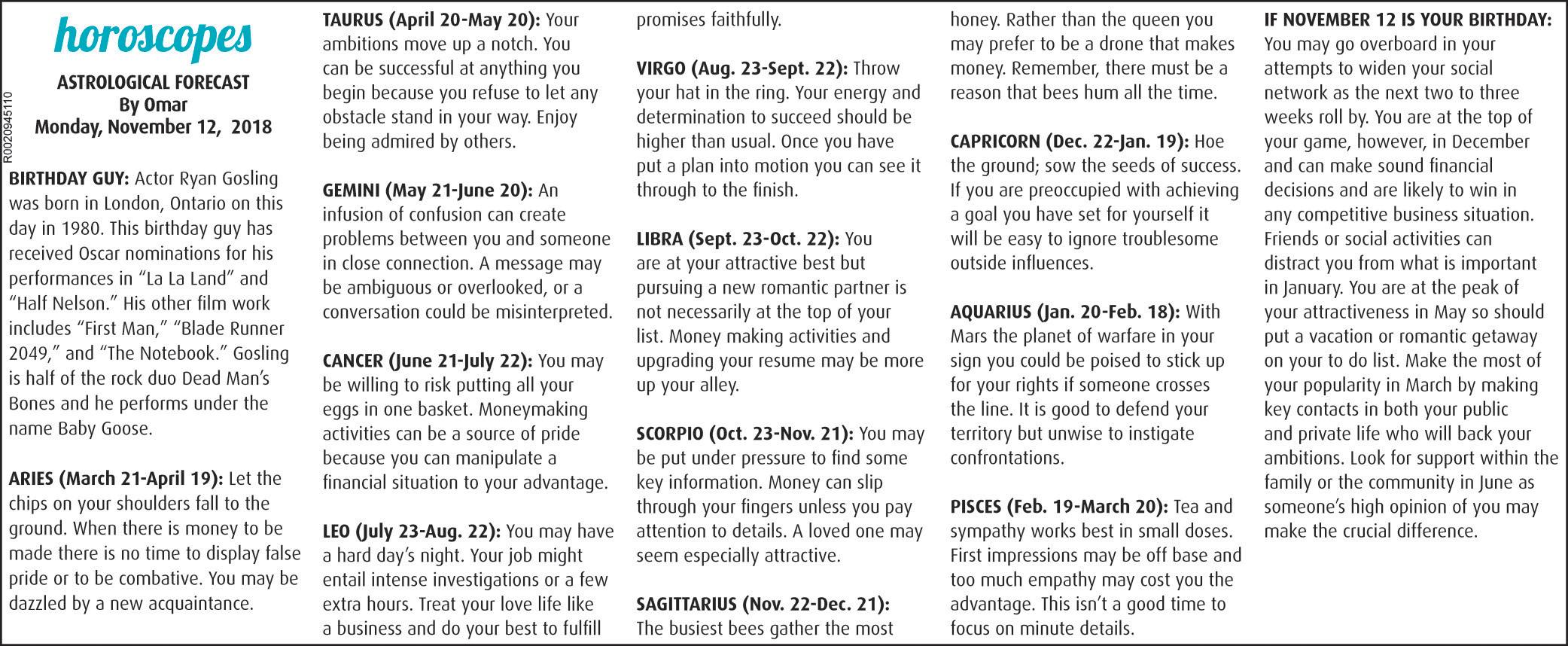



Michael O’SULLIVAN Citizen news service
Something’s different about Lisbeth Salander. Could it be the hair?
To be sure, the titular protagonist of The Girl in the Spider’s Web: A New Dragon Tattoo Story has changed her look dramatically since 2011’s The Girl With the Dragon Tattoo. There, she sported an asymmetrical, homemade-looking punk-rock mop and several scary facial piercings. Here, she looks like a medieval monk who time-traveled to the West Village: hip, but just this side of severe.
One other thing: the character in the new film is played by Claire Foy. The other one was played by Rooney Mara.
And yet there are more changes than meet the eye in this second American film based on the endearingly damaged, avenging-computer-hacker character created by the late Swedish writer Stieg Larsson. Skipping books two and three of Larsson’s bestselling trilogy, which have not yet been made into Hollywood films, and possibly never will be, Spider’s Web has jumped ahead, taking its inspiration from a fourth Lisbeth Salander novel that was written by David Lagercrantz after Larsson’s death. (Larsson’s domestic partner, Eva Gabrielsson, has bitterly criticized Lagercrantz’s book as “grave robbing.”)
It’s as if, in this go-round, the dragon tattoo that adorns much of Lisbeth’s body has been replaced with a logo.
Judging only by these two films, the Lisbeth of Tattoo – at once feral, brilliant, angry, ethically challenged and, in all likelihood, somewhere on the spectrum – has morphed into a kind of elite ninja warrior and international cybercriminal: an emotionally distant Jane Bond with a bad attitude and a black belt in Krav Maga.
In some respects, this Lisbeth doesn’t feel like the same person, even taking into consideration her character’s evolution in the intervening books (which did get made into Swedish movies starring Noomi Rapace). The Lisbeth of Spider’s Web is still, as she is variously described in the new movie, a “hacker with a history of aggravated assault,” “the girl who rights wrongs,” “the girl who hurts men who hurts women” and a “freak.” But there’s a level of professionalism and polish to what she does that is slightly off-putting.
It’s as if, in this go-round, the dragon tattoo that adorns much of Lisbeth’s body had been replaced with a logo. As this movie’s ungainly subtitle suggests, the freak has become a franchise.
In many respects, the fault lies not with Lisbeth but with the overly conventional story she’s caught up in, like a – sorry – spider’s web. After the Stockholmbased Lisbeth is hired to steal software from the National Security Agency – a program that would enable any user to access the military arsenals of any country – she has second thoughts about handing it over, even to the guy who created it (Stephen Merchant). But other, potentially less scrupulous people want it, too: the NSA agent who let it slip through his fingers (Lakeith Stanfield); his counterpart in Swedish intelligence; and a shadowy collective of mercenaries and arms brokers known as the Spiders. Events proceed as they so often do in these things. Cars are chased and bullets are dodged – some less successfully than others – until the cliches start clanging like clockwork, drowning out what was so appealing about Lisbeth in the first place; her quiet, almost mesmerizing brokenness. (She’s a survivor whose trauma, perversely, feeds her, as we learn in a flashback prologue to Lisbeth’s childhood. A tantalizing bit of personal history, and how it has empowered her, is revealed.)
Foy makes for a magnetic, if poker-faced, heroine, even if her partner, journalist Mikael Blomqvist, is a washout this time. Replacing Tattoo’s Daniel Craig, Swedish actor Sverrir Gudnason has a much smaller role here as Lisbeth’s sidekick – and a much more forgettable screen presence.
Spider’s Web may have its flaws, including a bit of villainous motivation so oversimplified it makes Dr. Evil’s thought processes look like Einstein’s. And yet despite Lisbeth’s makeover, there’s still something cool, complicated and compelling about this Girl. Lisbeth may be stuck in a silly movie, but she’s nobody’s victim.
— Two and one-half stars out of four

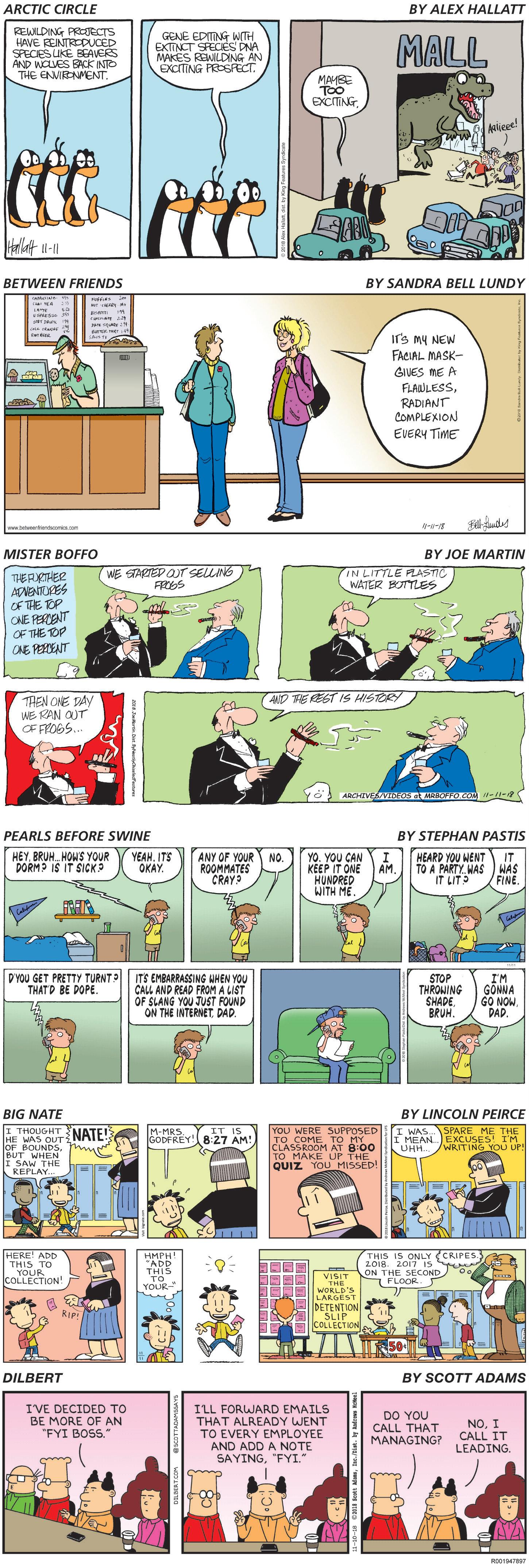

Jake COYLE Citizen news service
Like the bottomless trunk totted by “magizoolologist” Newt Scamander, Fantastic Beasts: The Crimes of Grindelwald is a mixed bag of wonders. Newt (Eddie Redmayne) can reach into his suitcase and, like Mary Poppins before him, pull out just about anything. And it sometimes feels as though J.K. Rowling – a screenwriter here for the second time – is similarly infatuated by her unending powers of conjuring. In this overstuffed second film in the five-part Harry Potter prequel series, every solved mystery unlocks another, every story begets still more. Narratives multiply like randy Nifflers (one of the many species of creature in Newt’s bag).
The usual problem for spinoffs is their thinness or their unfulfilled justification – especially ones that stretch an already much-stretched tale. (There were eight Potter movies.) But neither are issues in the two Fantastic Beasts films, each directed by former Potter hand David Yates. Both movies are rooted in purpose. The Crimes of Grindelwald, especially, is an impressively dark and urgent parable of supremacist ideology aimed squarely at today’s demagogues of division. And neither film lacks in density of detail, character or story. No, the only real crime of Gindelwald is its sheer abundance. In zipping from New York to London to Paris (with ministries of magic in each locale), this latest chapter in Rowling’s pre-Potter saga feels so eager to be outside the walls of Hogwarts (which also get a cameo) that it resists ever settling anywhere, or with any of its widely scattered characters – among them Newt, the conscientious dark magic investigator Tina (Katherine Waterston), the New Yorker no-maj Jacob (Dan Fogler), Tina’s sister and Jacob’s sweetheart Queenie (Alison Sudol) and the haunted former schoolmate of Newt’s, Leta Lestrange (Zoe Kravitz)
No one does the foreboding sense of a looming battle better than Rowling. Now, it’s the rise of Gellert Grindelwald (Johnny Depp), freshly escaped from prison, who casts a lengthening shadow over the land. With a blond shock of hair and a ghostly white face, Grindelwald is Rowling’s magical version of a white nationalist, only he believes in the elevation of wizards – “purebloods” – over those who lack magical powers, or “no-majes.”
It’s 1927 and the dark clouds of fascism are swirling; World War II feels right around the corner. In one the movie’s many tricks, Grindelwald drapes Paris in black fabric, like a wannabe Christo. Despite the gathering storm, the pacifist Newt (Redmayne, cloyingly shy), resists drawing battle lines. When pushed by his brother Theseus (Callum Turner), who like Tina is an Auror who enforces magic law, Newt responds: “I don’t do sides.”
The events of The Crimes of Grindelwald will test Newt, just as they will anyone trying to follow its many strands. The hunt is on for at least three characters – the missing Queenie, the on-the-lam Grindelwald and Credence Barebone (Eza Miller), the powerful but volatile orphan who spends much of the film seeking answers to his identity. He’s the Anakin Skywalker of Fantastic Beasts, whose soul is fought for by both sides.
If all of this sounds like a lot, it most definitely is, and that’s not even mentioning Jude Law joining in as a young Albus Dumbledore, who turns out to be awfully roguishly handsome under that ZZ-top beard. But our time here with him is short, just as it is with so many characters who – to the film’s credit – we yearn for more of (Fogler’s Jacob, especially). There is a flicker of a flashback that hints at a longago, maybe-sexual relationship between Dumbledore and Grindelwald; it would be the film’s most intriguing revelation if it wasn’t merely baited for future installments.
Siblings are everywhere in The Crimes of Grindelwald. Just as in the houses of Hogwarts, Rowling delights in duality and the interplay of light and dark. Even within the Aurors there are competing methodologies of law enforcement to face the growing threat. Newt is carried along like an avatar of sympathy: he believes that every beast can be tamed, that every trauma can be healed.
Rowling’s only source material going into the Fantastic Beasts films was a slender 2001 book in the guise of a Hogwarts textbook. But she has, with her mighty wand, summoned an impressively vast if convoluted world, one that’s never timid in exploring the darkness beneath its enchanting exterior. And, with Yates again at the helm, The Crimes of Grindelwald is often dazzling, occasionally wondrous and always atmospheric. But is also a bit of a mess. Even magic bags can be overweight.
Fantastic Beasts: The Crimes of Grindelwald, a Warner Bros. release, is rated PG-13 for some fantasy action violence. Running time: 134 minutes. Two and a half stars out of four.


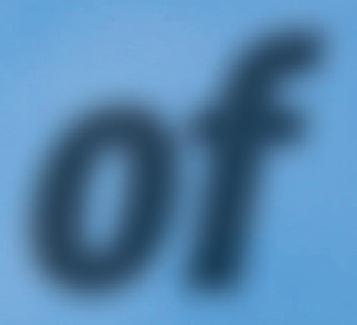

Cruising is as popular as it has ever been, with 27.2 million people expected to set sail by the end of the year, according to a cruise industry trade organization. That’s an increase of nearly 10 million people since 2009, when 17.8 million passengers embarked. As the industry grows, cruise lines are finding new ways to appeal to passengers of all ages, with better technology, more exciting destinations and adventures, trendy entertainment (a floating escape room, anyone?), health-centric themes and more.
“There’s a cruise for everyone and there’s something on every cruise for everyone,” says Megan King, senior vice president, global strategic communications and research at Cruise Lines International Association (CLIA).
King and two other cruise experts weighed in on what’s trending now in the world of cruises. Here’s what’s new:
• Cruises are making it easy to visit places that can be challenging for travelers.Expeditions to hard-to-reach places are big draws to cruising, says Colleen McDaniel, senior executive editor with Cruise Critic, a review site and online community.
“They’re taking passengers to places like Western Australia and the Kimberley, and western Greenland, which, you don’t know you want to go there – but you want to go there,” McDaniel says.
King adds that she’s seeing lots of people cruise to places such as the Antarctic, the Galápagos Islands, Cuba and other off-the-beaten path locales.
“Access is the new luxury,” King says. “People are defining luxury as these individualized experiences to places that their friends don’t necessarily get to go.”
She adds that cruises also appeal to travelers with a sense of adventure – and their companions who may not feel the same way. Case in point: her own parents went on a long cruise around South America and each enjoyed the trip their own way.
“It allowed my mom to climb Machu Picchu while my dad smoked cigars on the deck,” she says.
• Cruise lines are getting more creative with attractions, entertainment and other offerings – for a price. Cruisertainment goes well beyond karaoke and shuffleboard these days. Take go-karts on a cruise, for example. All three experts interviewed for this report

mentioned the two-level track on Norwegian Bliss. Escape rooms –those interactive games where you have to solve puzzles and riddles to get out – are also becoming more popular on cruises, a trend that McDaniel says started with Royal Caribbean and has since spread. Of course, there’s a reason for such offerings, and it goes beyond sheer entertainment value.
“Read the quarterly reports from any of the major cruise lines, and you’ll see that they know modern cruisers value experiences over things. Translation: passengers are more willing to pay to eat in a specialty restaurant or go on a shore excursion than they are to buy a souvenir in the gift shop,” says Doug Parker, producer of Cruise Radio, a weekly podcast that shares cruise reviews and news.
“That’s why new ships feature everything from go-kart tracks to tattoo parlors, all of which come at an added price.”
• Technology keeps getting better. Over the years, the Internet has gotten more reliable and affordable on cruise ships.
“All of the cruise lines are competing for the title of ‘best internet at sea,’” Parker says. But cruise lines are also experimenting with other technology. King points to Princess Cruises’ Ocean Medallion,
which is a wearable device that stores your digital identity and allows you to make payments and access your room. Other cruise lines, she says, have used facial recognition.
“A lot of this is in the development stage, but I think it’ll wind up being adopted because it’s a convenience to the guest, and it adds to their experience in terms of the level of service they can get,” she says.
• Health and wellness can be a part of cruising. Travel and healthy diets have never been the best of bedfellows. But the right cruise ship can make it relatively easy to stick to your routine.
Weight Watchers participants can count their points easily on a branded cruise via MSC Cruises, for example, and O, the Oprah Magazine, recently partnered with Holland America to offer trips influenced by Oprah Winfrey that keep wellness at the fore.
“It’s part of a unified vision that invites guests to live life to the fullest,” reads the Holland America website.
But you don’t have to be on a themed cruise to keep fit. McDaniel is quick to point out that most cruise ships are hyper-aware of the fact that wellness is expected today.
“Cruise lines do a good job of keeping up with what’s trendy on land, so you can do SoulCycle or TRX or whatever is really hot right now,” she says.
• Conscientious cruising is in. Cruises have become ecologically aware, says Parker.
“In ways big and small, cruise lines are trying to decrease their carbon footprint. Every major line is moving toward eliminating single-use plastics, such as straws, and most either have ships on order that use liquefied natural gas – a.k.a. LNG, the cleanest-burning fossil fuel – or are looking into doing so in the near future.”
King adds that the conscientiousness extends beyond the environment and applies to respect for cultures and sustainability. She says that could mean limiting the number of people snorkeling in certain areas, or it could translate as cruise officials coordinating with a city.
“We know that some of these places are primarily accessible by cruise ship, so we need to make sure that we’re working with those governments to help them enjoy the benefits of tourism while protecting their places.”
• Cruise ships are embracing their connection to the ocean. While marine views have, of
course, always been a part of cruising, the newer ships are finding ways to more consistently connect passengers with those views. McDaniel points to the example of Celebrity Edge, a ship set to launch in December that is already making waves with its balcony designs. Rather than the traditional balcony that feels separated from the cabin, this ship actually incorporates a kind of veranda into the room. A guest can push a button and a window lowers, allowing a fresh sea breeze in.
“It’s a very different take and no other ocean ship has done this yet,” she says. “But I think it’s such a cool thing that I expect others will pick up the idea.”
She adds that Celebrity Edge also has a feature called the Magic Carpet, which is a cantilevered platform on the side of the ship that can move to different levels and host different events, like special dinners or parties. And other ships are also adding oceanic ambiance. McDaniel says that Norwegian Bliss, for example, has a remarkable observation lounge where passengers can take in views at the front of the ship while sipping a cocktail; and Norwegian Breakaway and Breakaway Plus ships have an oceanfront promenade, with shops to stroll by as well as indoor/outdoor dining and drinking options looking out on the water.
• The whole family is going along for the ride. Travelers are realizing that cruises make a lot of sense for family vacations. According to research by CLIA, nearly half of families that cruise bring the kids along, compared with 29 per cent of those traveling on land. King says a cruise is a good fit for a family because everyone can spend the day doing what they want – mom and dad can go to the spa; the kids can hit the pool or the zip line or the kids club; and if grandparents want to join for a multi-generational trip, they can amuse themselves, too.
“It makes for a very easy vacation in keeping everyone happy,” King says. “And yet, they can all gather together and have meals or gather on activities or do an excursion and they get to spend some of that time together, too.” McDaniel and others interviewed are optimistic about the future of cruising.
“Cruise remains hot and it is continuing to grow. We’re in this period right now that we’re seeing new builds come in at a pace that is unprecedented and exciting.”

What’s new with the Cougars? Get the latest on trades, injuries, post-game analysis and more

Sheila KIM Citizen news service
Digging into your home’s past can be fun, but it can also help you make aesthetic decisions and avoid costly mistakes.
Architect Anik Pearson recalls a New York client who wanted to install a pool in his basement. She referred to historical maps of Manhattan that showed where all the waterways, wetlands and hills existed, and discovered a river underneath the townhouse.
“They poked a hole in the basement and sure enough, there was running water. The river was still there.”
You can aid the renovation process by conducting your own research ahead of time. Look at old maps from your local historical society or online through the U.S. Geological Survey, educate yourself about which materials are right for your home’s climate and setting, and visit a museum that has period rooms based on your home’s era. Look back at the real estate listing, if you can, because many agents of older properties include a backstory and ownership history. There are also books – such as Victorian Architectural Details by A.J. Bicknell & Co. and The American Builder’s Companion by Asher Benjamin – that show historical precedence, proportions, molding shape used during specific eras, and style differentiation between, say, Victorian gingerbread and gothic revival.
“All of those styles have a specific language that has been recorded carefully in these books,” Pearson says.
In this age of HGTV shows and YouTube tutorials, many homeowners consider bypassing a professional for what they think are easy cosmetic alterations. But mistakes can cost them more than an architect’s fee. A common example is when homeowners try restoring curb appeal with quick-anddirty fixes, such as power-washing a stain or painting over an ugly house color.
Stripping or removing paint is especially an area to exercise caution: Although in newer homes it’s safer because modern paints don’t contain harmful substances such as lead, old paints can contain such substances. But simply applying a new coat shouldn’t be a problem for DIYers.
“Cosmetic improvements that don’t affect any systems are usually safe DIY projects,” says Naomi Miroglio of San Francisco-based Architectural Resources Group. But “if finishes need to be removed or walls opened up, it should be left to a professional.”
She points to replacing faucets in bathroom sinks, typically an easy DIY project in newer homes, as an example of what not to do in older homes.
“Often the cutouts in the porcelain for the faucet and knobs are at different dimensions than current faucet assemblies. One has to look for salvage pieces or customorder them.”
Miroglio also recommends leaving electrical and plumbing work to the professionals because of the safety risks.
Many owners of older homes will either refinish the original elements, such as the woodwork, or install reproductions. Juxtaposed with the worn details, however, these pristine copies or gleaming finishes can look out of place. Worse yet, some of the materials used in decorative reproductions lack the quality and durability of the original

materials.
“Some contractors think it’s more trouble to save decorative pieces than work around them,” Miroglio says. “You might have four beautiful column capitals and one bad one. They’ll suggest replacing them all to look the same. Often it’s a cheaper material inside like Styrofoam.”
Or, she adds, they’ll strip and re-stain the wood floors, resulting in an overly pristine appearance that’s lost a lot of character. Instead, she recommends retaining some of the aged look.
“It’s arrested decay: You stop it from decaying but avoid making it look brand new.”
The elements could be historical finishes or objects that aren’t in perfect condition, such as light fixtures with a worn metal finish, wood trim that shows signs of wear and crackled paint on a ceiling light medallion.
“We’ve even seen layers of peeling wallpaper and exposed plaster kept intact with a clear coating applied,” Miroglio says.
Architect Adam Zimmerman of Zimmerman Workshop agrees: “Nothing looks worse than antique details directly adjacent to poorly done new ones that are deliberately trying to match. The new will highlight how dilapidated the old really looks.”
He offers a trick to avoid this: “Let’s say you have historic baseboards and you decide to build a new wall. We might borrow the baseboards from rooms in other parts of the home for the wall. Or, if you have to mismatch within the same room, use similar style and scale, and then break old from new so that they’re not in direct contact. It always comes down to the details.”
Older, unrenovated homes aren’t going to win any awards for energy efficiency. So many homeowners target those drafty wooden windows for replacement. But architects caution against choosing modern vinyl options.
“Even though a wood window will cost a lot more than vinyl or aluminum, the wood is worth the investment because it can survive a hundred years,” Pearson says. “Vinyl
clad won’t last for more than 10 or 20 years, and metal clad is better than vinyl but in arid climates.”
Looking at it from a preservationist standpoint, Miroglio argues: “It’s always more sustainable to keep something rather than replace it. We work hard with homeowners to understand how you can weatherize wood double-hung windows. Maybe they just need new putty.”
Implementing modern technology, such as home automation, is a hot topic. Fortunately, the nature of WiFi means there’s no need to rewire the house or install high-tech devices out in the open.
“There’s no reason a thermostat has to be in plain view. You could keep it in a closet and use a hidden sensor that no one sees,” Pearson says.
You can also find replacements that function in a modern way but look oldfashioned.
“There’s a market for this type of product now,” says Fauzia Khanani of New York’s Studio For. “Great brands are making products with modern technology and a historic look, such as light switches.”
Shops including Rejuvenation and House of Antique Hardware carry reproduction push-button light switches with discreet dimmer functions, for instance.
Architects are divided on the idea of opening up historical homes. But older floor plans can clash with modern-day living, and a well-renovated and expanded kitchen, for example, can increase the value of most properties. And an open concept might serve some families better than a compartmentalized layout. “It’s important to work with the original spatial organization, but some historic structures didn’t originally
have kitchens. They were additions,” Miroglio says. “Such areas are ripe for adapting, and the kitchen as the center of a house is really big.”
“It’s perfectly acceptable to knock down walls,” Pearson says, but this also can go beyond a kitchen space. “There is a history of people altering structures, adding on wings at different times. We’re just one step in a larger picture. What’s important is that the structure isn’t being torn down but reused.” If you expect to sell the home in the future, keep in mind that “value is directly connected to things like square feet, kitchens, and room and bathroom count,” Zimmerman says.
“Reducing any of those on paper – like the house size or number of bathrooms – would certainly work against you. These are marketing stats prospective buyers read before even deciding to view a property.”
Khanani warns that it’s possible to go too far in the hunt for an open concept. In older homes, “each room had a specific function and there was a transition, whether doors or a threshold.” She adds, “There is something about each one of those spaces that made it unique, so taking that away takes away something from the house.”
Most architects agree that additions, when done with care, are acceptable. But not all additions are tasteful. Khanani points to a Victorian in New York’s Hudson Valley that she recently renovated.
“There was an awkward addition that was functional but looked like an appendage and not part of the original design intent,” despite it stylistically matching the finishes and details of the rest of the house. And its placement at the side of the house made it visible from the street. Khanani removed it entirely, and there uncovered a beautiful bay window with a window seat, which she restored.
Then, to reclaim the square footage lost, she designed an addition on the back side of the house that was about the same size as the previous addition.
Impress your guests with a curated, vintage-inspired dining room
McDONOUGH Citizen news service
November is here, and for many of us, that means a lot of quality time spent around the dining room table. It’s the perfect place to share good meals and conversation with friends and family.
Interior designer and stylist Ginny Macdonald’s cozy, Old World-inspired dining room caught our eye on Instagram.
The standout space looks warm and inviting – a perfect place to swap stories,
jokes and laughs with guests around the holidays.
“My main inspiration for this room, and the house in general, was heavily taken from having grown up in the U.K.,” Macdonald, of Ginny Macdonald Design, wrote in an email.
The designer, who now lives in Los Angeles, incorporated a mix of vintage furnishings and contemporary accents to create a curated look.
While the dining table and Eames chairs are new and speak to a midcentury era, most of the other pieces of furniture are
flea market finds,” she said.
The centerpiece of the room – the oversize vintage map of England – was scouted by Macdonald at an antique mall in California. “It’s probably my favorite vintage find in the house,” she wrote.
For a similar feel, she suggests searching on Etsy for vintage maps and art (she likes the shop Reclaimer), and mounting the work in simple and modern frames. You can also scour your flea markets, antique stores or eBay.
Want to achieve this look? Try these tips and products.
For dining room chairs, don’t be afraid to mix and match styles.
“Start off by selecting the main pieces, whether it be the dining table or the chairs,” Macdonald advised. “If you choose a modern dining table, then look for vintage chairs, and vice versa.”
To “add a layer of eclecticism,” she mixed two modern Eames armchairs with her beloved vintage bentwood dining chairs. That iconic bentwood design can be found in Crate and Barrel’s beechwood Vienna dining chairs in walnut ($149 each, crateandbarrel.com ).




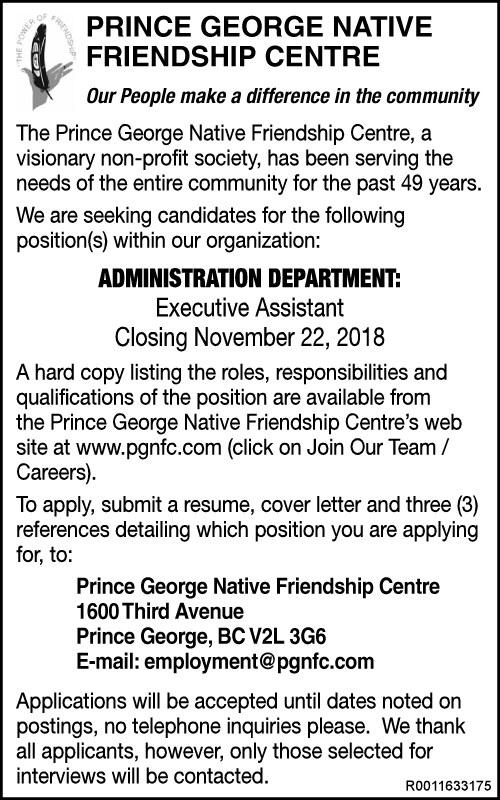
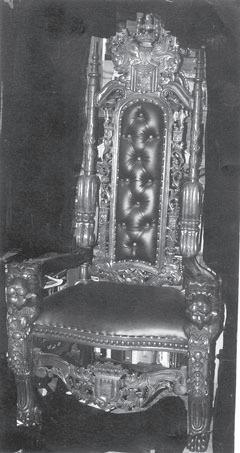
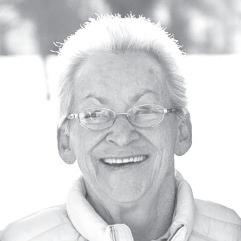
FOUCHER,CARMENN.
TheFoucher’s/Kipping’s/LeFebvre’swanttothankso manypeople,forallthesupportandlovethatwe receivedwhileourmother/grandmother/sister/aunt/ cousin,CarmenNoellaGraceFoucher,wasgallantly fightingherbattlewithcancerandfinallysuccumbed onAugust31st,withherprideandjoysbyher bedside.
Duringthistimewecreatedastrongerbondand created/renewedfriendships.Friends/familywere generouswithensuringwewerewellfed,knowing wewerethoughtofbythemanybeautifulsympathy cardsandthemanybeautifulbouquetsofflowers. Wehaveahugevoidinourfamilybutweare promisingamongstourfamilytocontinuethe closenessthatCarmenworkedsohardatachieving. Wedidonelastthingforourmotherwhichwasthe tributetripweplannedwithher.Wetookherto Toronto,Montreal,TroisRiviere,Batiscan,andVieux Quebec.Iencourageyoutovisitmymothers websitewhereyoucanseeherlifefrombeginningto end(carmenfoucher.ca).Wealsohavecreateda LegacyFundinhonourofourparentsandallthe informationisonherwebsite.Fromallofher childrenandgrandchildrenwethankyoufromthe bottomofourhearts.

EUGENE WITTE passed on peacefully in Prince George
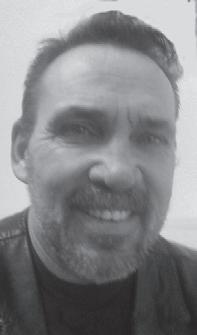
CHRISTENSEN
May 31,1960 - Oct 6, 2018
How does one say good-bye to another who has been connected to you by an invisible and indestructible thread for 58 years? How do I go on without him? Milton is survived by his daughter Tristan, sisters Ethel and Joyce, nieces, nephews and cousins. Predeceased by his parents, Roy and Nola, brothers Hyrum and Kenny, sister Susanne, and niece Nola. Milton enjoyed school making many life-long friends, especially at Kelly Road. Family times were happy, holidays with grandparents, fishing at Francois Lake, road trips and camping. Throughout his life he had a passion for Chevy cars and trucks, HD motorcycles too. Restoring several muscle cars - how I loved those rides. A hard worker, member of the IUOE Local 115, he worked as a heavy equip operator in logging and construction. He had an irrepressible personality, and quickly became part of the team. Loved for his loyalty and willingness to lend a hand. Mom taught us to love nature…a soft wind, a brilliant snowfall, a forest, a shimmering lake, a wolf’s howl, the splash of a fish, blue skies and the sun on my back. There, his daughter’s laugh, and music - this is where I shall find him… still. So…not good-bye my brotherhow could I say good-bye to my own heart? You are now free...in




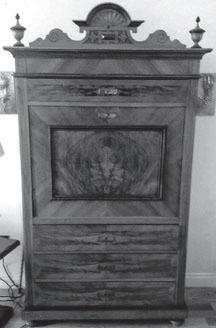


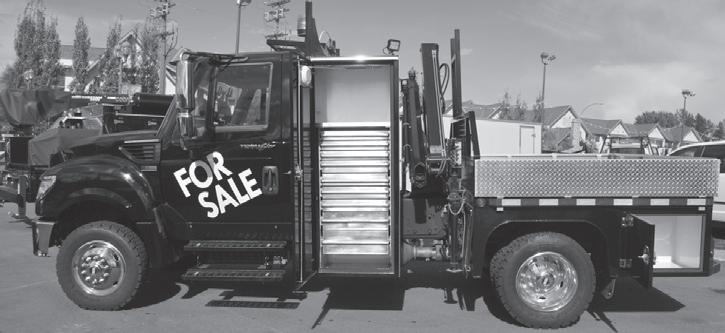



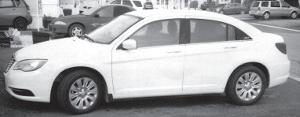



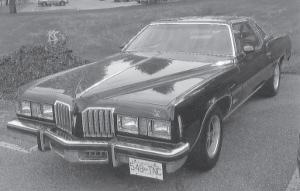


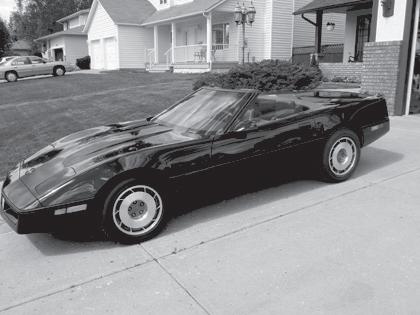

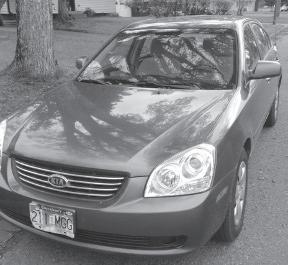



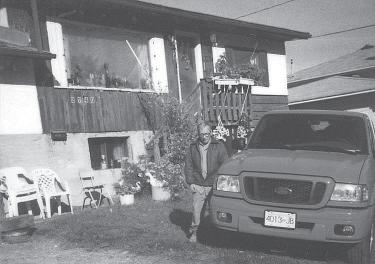










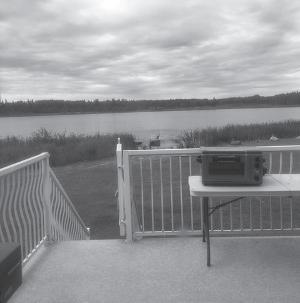
































Citizen new service
Moments before the armistice ending the First World War took effect on Nov. 11, 1918, a sniper’s bullet sliced the morning air.
It struck a Canadian soldier in the chest as he emerged from the doorway of a house in a small Belgian village. Pvt. George Lawrence Price died minutes later at 10:58 a.m. – a mere two minutes before hostilities ceased.
He became the last British Empire soldier to die in a war that claimed millions of lives, including nearly 67,000 Canadians and Newfoundlanders.
It’s unclear whether the 25-yearold was aware the war was so close to being over when he and five other members of ‘A’ Company, the 28th Battalion of the Saskatchewan North West Regiment, decided on their own to search a series of houses for Germans in Ville-Sur-Haine, east of Mons.
“They had heard rumours for months that maybe the war was going to come to an end, but if you are a soldier on the front lines you tend to take that stuff with a grain of salt,” said Ken Hynes, curator of the Army Museum Halifax Citadel. “So George was doing his job as he saw it.” Price was posthumously awarded the British War Medal and the Victory Medal.
He is interred in a cemetery in Belgium not far from the war’s first British Empire casualty, Pvt. John Parr of the 4th Battalion Middlesex Regiment.
Price’s story has remained ingrained in the lore of succeeding generations of his surviving family, according to his niece, Beverly McLean, of Kentville, N.S.
“My mom was his second youngest sister and from the time I was

a little girl that’s all I heard was about Uncle George,” McLean said following the recent premiere in Halifax of a short documentary film about Price.
“My mom just worshipped him and she named her son George after Uncle George.”
Price, a native of Falmouth, N.S., was working as a labourer in Moose Jaw, Sask., when he was conscripted on Oct. 15, 1917.
He fought in the Battle of Amiens, the Battle of Cambrai and the Pursuit to Mons, and was gassed in the Canal-du-Nord area on Sept. 8, 1918. Upon his discharge from hospital, he returned to his unit on Sept. 26 and was on the line in Canal-du-Centre when he took part in the final action that
led to his death.
According to unit records, Price and his comrades crossed the canal to check on houses that appeared to be the site of a German machine gun post. They rushed one house and found only the owner and his family after the Germans ran out the back door.
A second house was checked, and as Price stepped back into the street he suddenly slumped into the arms of Pvt. Art Goodmurphy. He was dragged back into the house where attempts to save him proved futile.
According to an eyewitness account by Goodmurphy in an interview conducted after the war, he said that he went back to his company’s position and told a
major that Price had been killed.
“Oh Jees did he blow a fuse,” Goodmurphy recalled. “The war is over, the war is over, he (the major) said. I said, well I can’t help that.”
Goodmurphy also reported the major as saying “What the hell did you go across there for? We had no orders to go across there.”
But Goodmurphy’s account noted the reconnaissance party “never even thought about the war being over then,” adding that “we didn’t always get orders to do everything that we did.”
Canadian War Museum historian Tim Cook said the Canadian Corps had in fact received orders at 6 a.m. on Nov. 11 that the war would end at 11 a.m. that day.
Most battalions got word no later than 9:30 a.m. “and they went to ground” Cook said. “Still, there were patrols along the front including George Price’s.”
Hynes said whether Price received the specifics of those orders is unknown, and the same doubt about whether all soldiers knew how close war’s end was can likely be extended to the German soldier who shot him.
“One can speculate about whether the German soldier knew this – who knows?” said Hynes. “That information is lost to the mists of time.”
Hynes said even in light of the horrific death toll suffered by all armies during the war, it is fitting for Price to be recognized as a figure of historic significance.
“It’s very difficult for people to wrap their minds around the mass numbers of casualties that were taken in the Great War,” he said. “But if you can focus on a single person then perhaps you can make a connection with the sorrow and the tragedy.”
Price’s grand niece, Rhonda McLean, said she was fascinated by his story from a young age.
“His photo hung on my grandmother’s living room wall, and so he was always present in any of the conversations going on in the family in a funny way because his eyes would follow you no matter where you were sitting in the room,” she said.
McLean said it was only as she grew older that she began to grasp the meaning of her great uncle’s death in a more profound way.
“It’s a story of incredibly bad timing,” she said.
“And now of course, that’s what tends to hook most people when they hear this story. He nearly made it home and he didn’t, and so he’s become a real representative in a way for all of those who didn’t come home.”
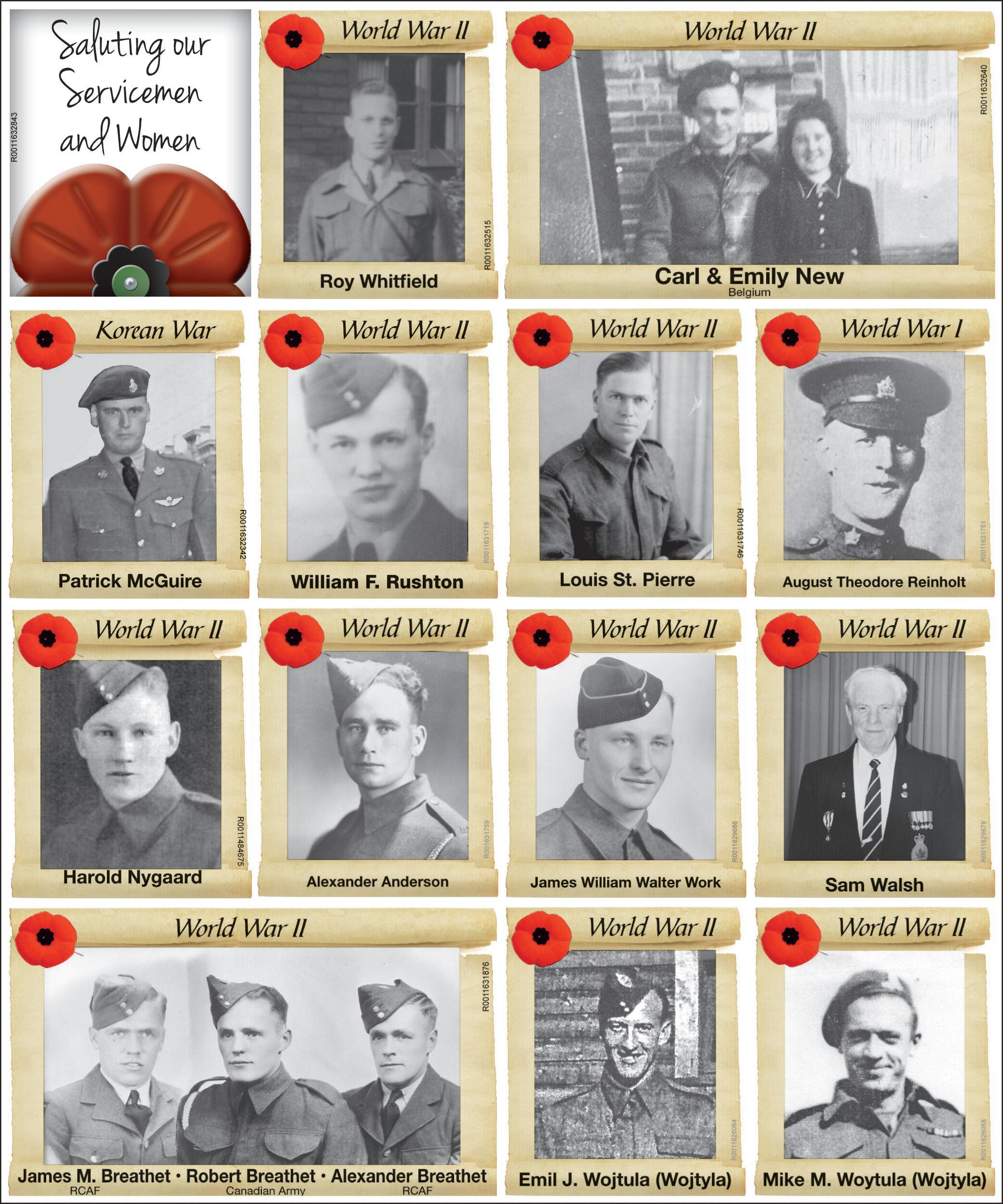


SASKATCHEWAN
Recruits from File Hills, Sask., pose with elders and a government representative in a 1915 photo from the Saskatchewan Provincial Archives Collection. About 4,000 First Nations men served in the First World War. After the armistice of Nov. 11, 1918, they came back to Canada and were still unable to vote, faced racism and were largely shut out of the meagre benefits that were provided.
Francis Pegahmagabow went to a recruitment office almost immediately after war was declared in 1914.
The Ojibwa sniper from Wasauksing First Nation of Parry Island would serve with the 1st Infantry Battalion and went on to become one of the most decorated soldiers in the First World War.
When he returned to Canada, his reputation as a brave soldier counted for very little and he didn’t receive the same rights or benefits as his white comrades.
“They’d gone from being a soldier to just an Indian again,” said Scott Sheffield, associate professor at the University of Fraser Valley and author of a report on First Nations veterans that prompted a federal government apology in 2003.
Indigenous people were part of every 20th-century conflict Canada was involved in and served in the Canadian military at a higher per-capita rate than any other group.
About 4,000 First Nations men served in the First World War. After the armistice of Nov. 11, 1918, they returned to Canada still unable to vote and largely shut out of the meagre benefits on offer.
Although veterans were eligible to borrow money through the government for farm land, it was almost impossible for First Nations veterans to qualify.
“Worse than that, around 80,000 acres of reserve land that was good for farming was actually taken away from reserves, mostly in the Prairies, and largely given to white settler veterans,” Sheffield said.
That didn’t stop Indigenous people from taking up the call again when Canada joined the Second World War – about 4,300 enlisted.
Thomas (Tommy) Prince, a member of the Brokenhead Ojibwa Nation in Manitoba, enlisted in 1940 and eventually was assigned to the Canadian-American First Special Service Force, known as the Devil’s Brigade.
He became a legendary sniper, was awarded multiple medals and also served in the Korean War.
Back in Canada, Prince ended up living in shelters and on the streets of Winnipeg until his death in 1977.
After the Second World War, Indigenous veterans couldn’t get information from trained veterans affairs counsellors, and had to go through their Indian agent. It was difficult for them to connect with nonIndigenous comrades because they weren’t allowed in legion halls.
They were also unable to get a loan-grant combination that helped veterans set up careers and businesses.
But Indigenous men and women continued to enlist and serve in the military – from
NATO duties during the Cold War to more recent tours in Afghanistan.
Now an effort is underway to honour their sacrifice.
Randi Gage, a Saginaw Chippewa from Michigan and a United States army veteran, organized the first Aboriginal Veterans Day in Manitoba in 1993. She wanted a day to honour them in their own communities but still allowed them to gather for Remembrance Day ceremonies.
Nov. 8 was chosen because the number turned sideways is the Metis infinity symbol and it’s connected to some First Nations teachings, Gage said.
She wrote letters to communities and veterans organizations to spread the word about the event.
“Most of the letters came back the most racist, disgusting: ‘What the hell do you think you are doing?’, ‘What makes you so special?”’ she said.
But the event went ahead with a handful of veterans.
The next year, National Aboriginal Veterans Day was inaugurated by Winnipeg’s city council. Gage said thousands of people attended to honour Indigenous veterans.
“To see the pride in those guys, it still gets me today,” she said, starting to cry. “It started the discussion. It started people talking.”
The 25th Aboriginal Veterans Day was
celebrated Thursday but Gage said there is still more work to do.
The federal Standing Committee on Veterans Affairs has launched a study of benefits for Indigenous veterans.
Veterans Affairs said in an emailed statement it is committed meeting the needs of Indigenous veterans and is talking to Aboriginal groups to determine the way forward.
Meanwhile, the Canadian War Museum in Ottawa is holding a photographic exhibition, presented by the Embassy of Belgium, to celebrate the diversity of those who fought for the Allied effort. It includes images of Maori soldiers from New Zealand, Sikhs from the Indian Army Corps, and a photo of Indigenous recruits and elders from File Hills, Sask.
A photo of Inuk sniper John Shiwak, who died on the battlefield in 1917, also hangs on the wall.
Peter MacLeod, the museum’s director of research, said he hopes it changes the perception of people who fought in the First World War.
“There is a huge story there about the diversity of the Canadian corps and the war effort in general,” he said. “This exhibition... makes Canadians a bit more aware of the diversity in our country’s history and the contribution that all groups have made to Canada.”
